EXTREMELY RARE! WWII D-Day Operation Overlord 1944 Dated Combined Operations Headquarters (COHQ) Flag - Invasion of Normandy Operations HQ Flag
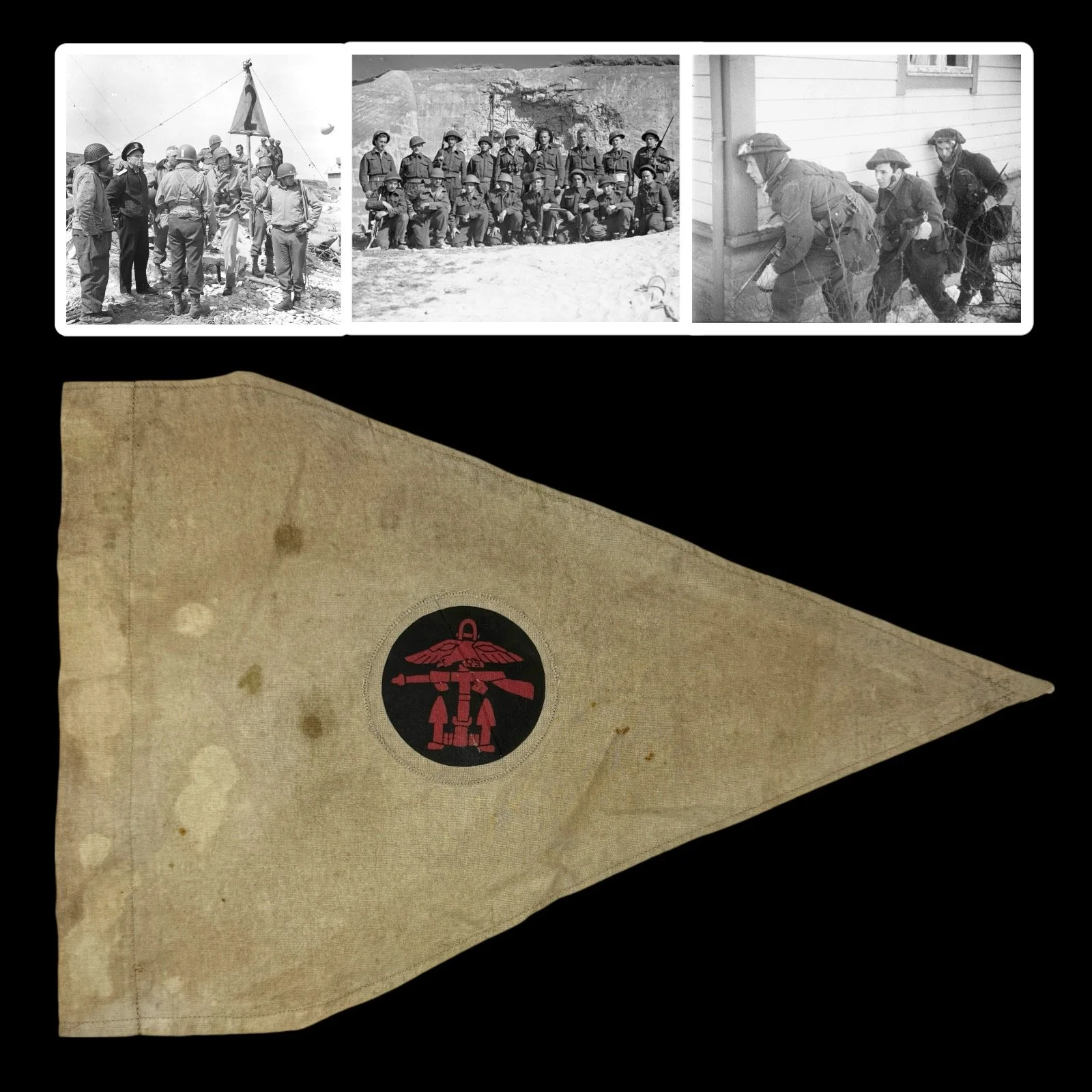

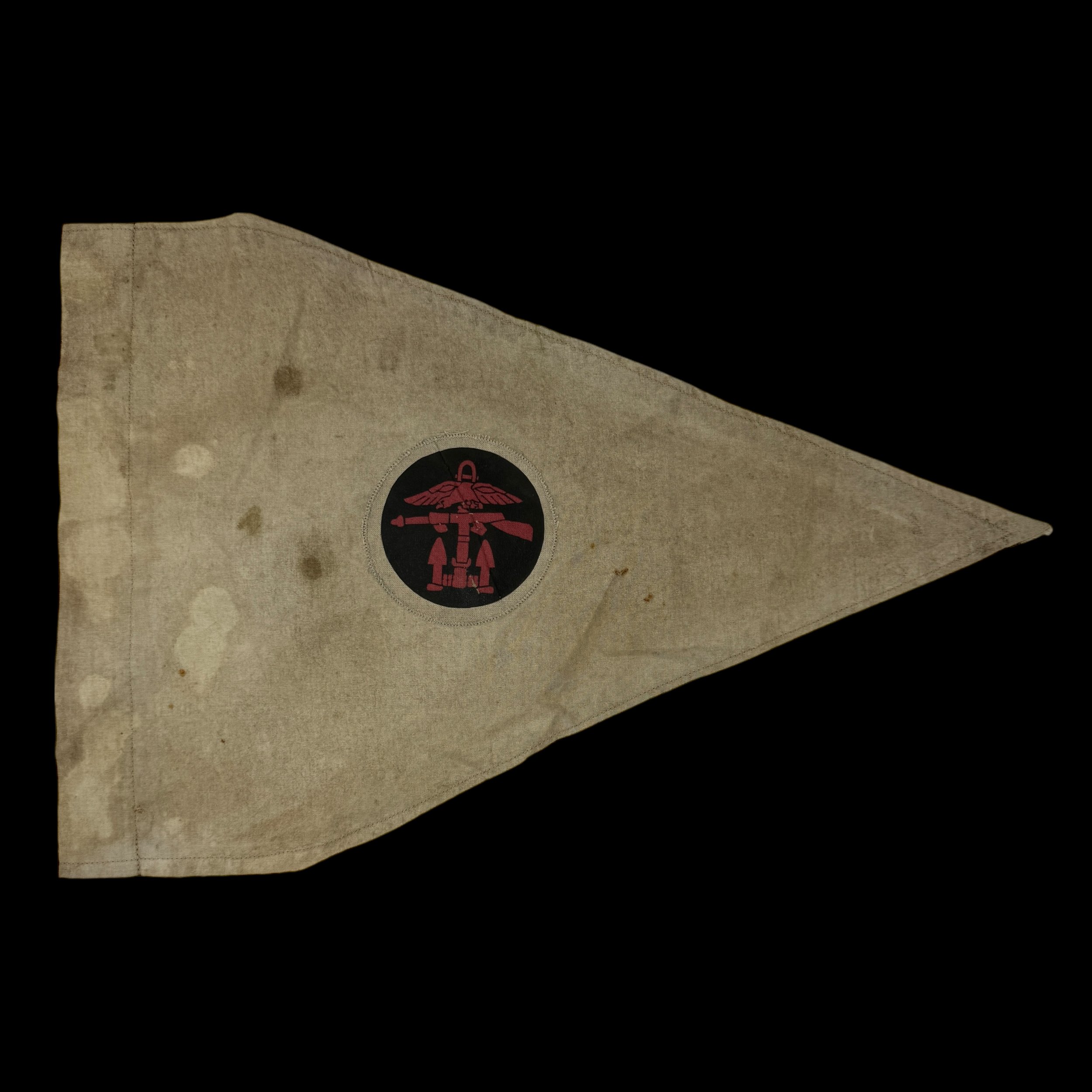

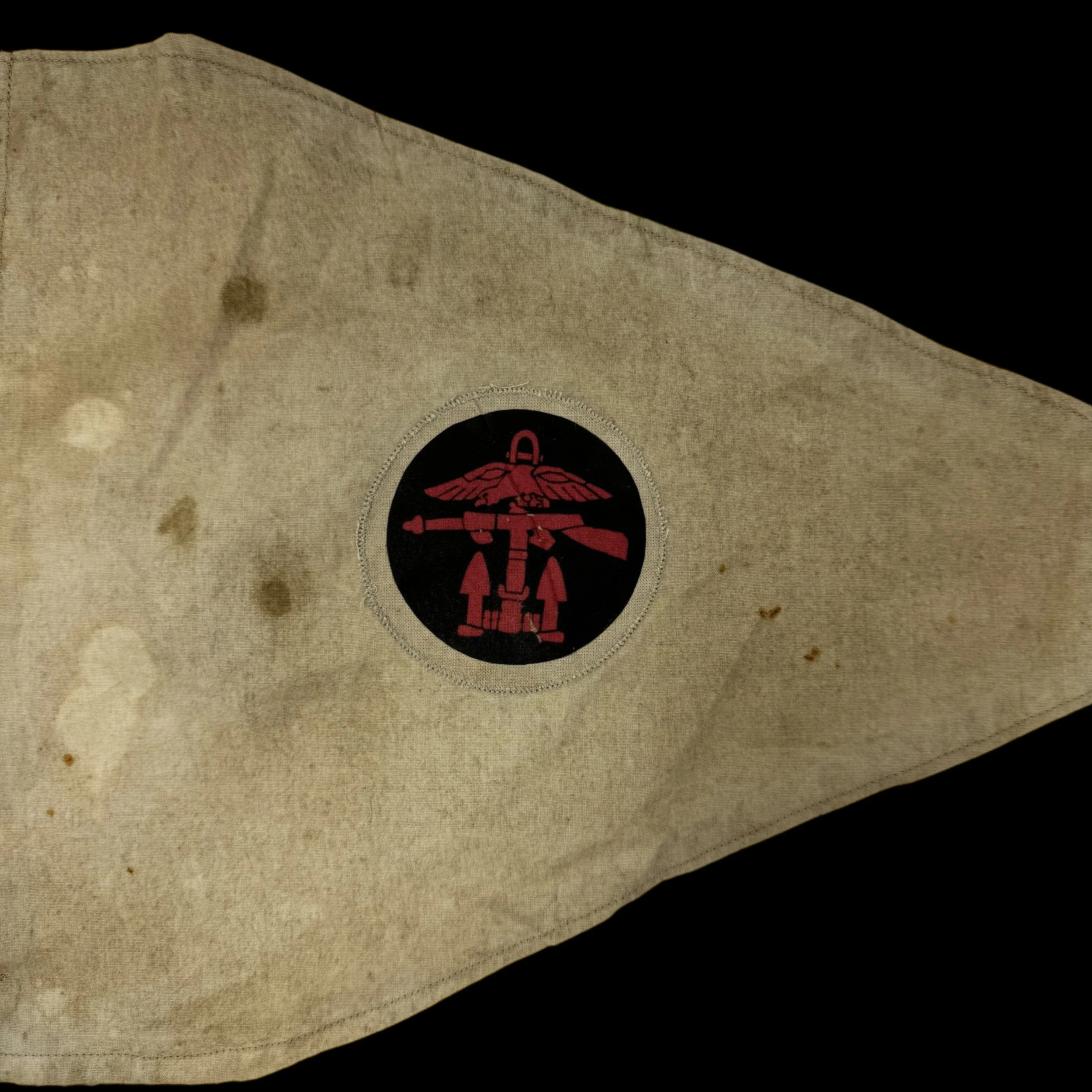

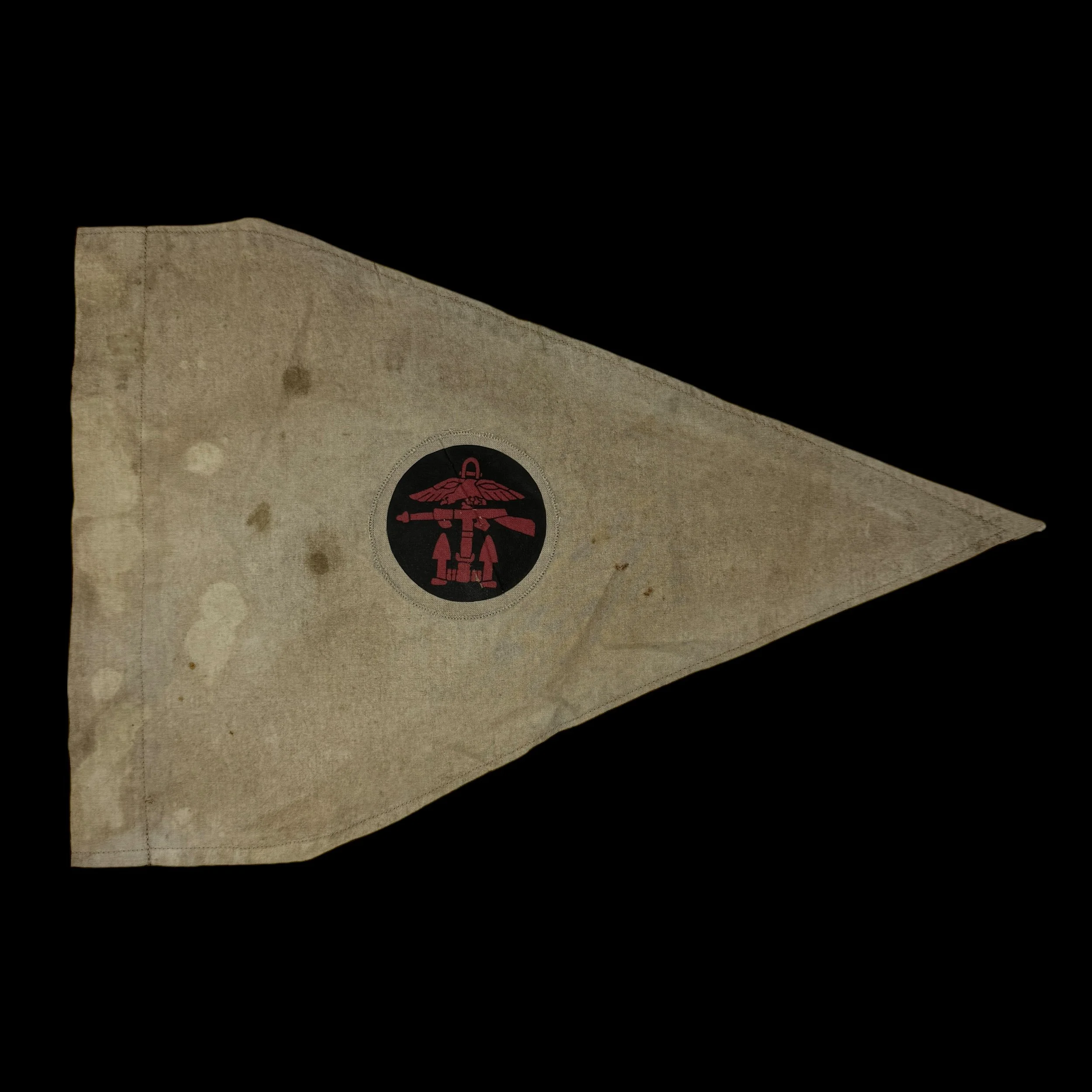

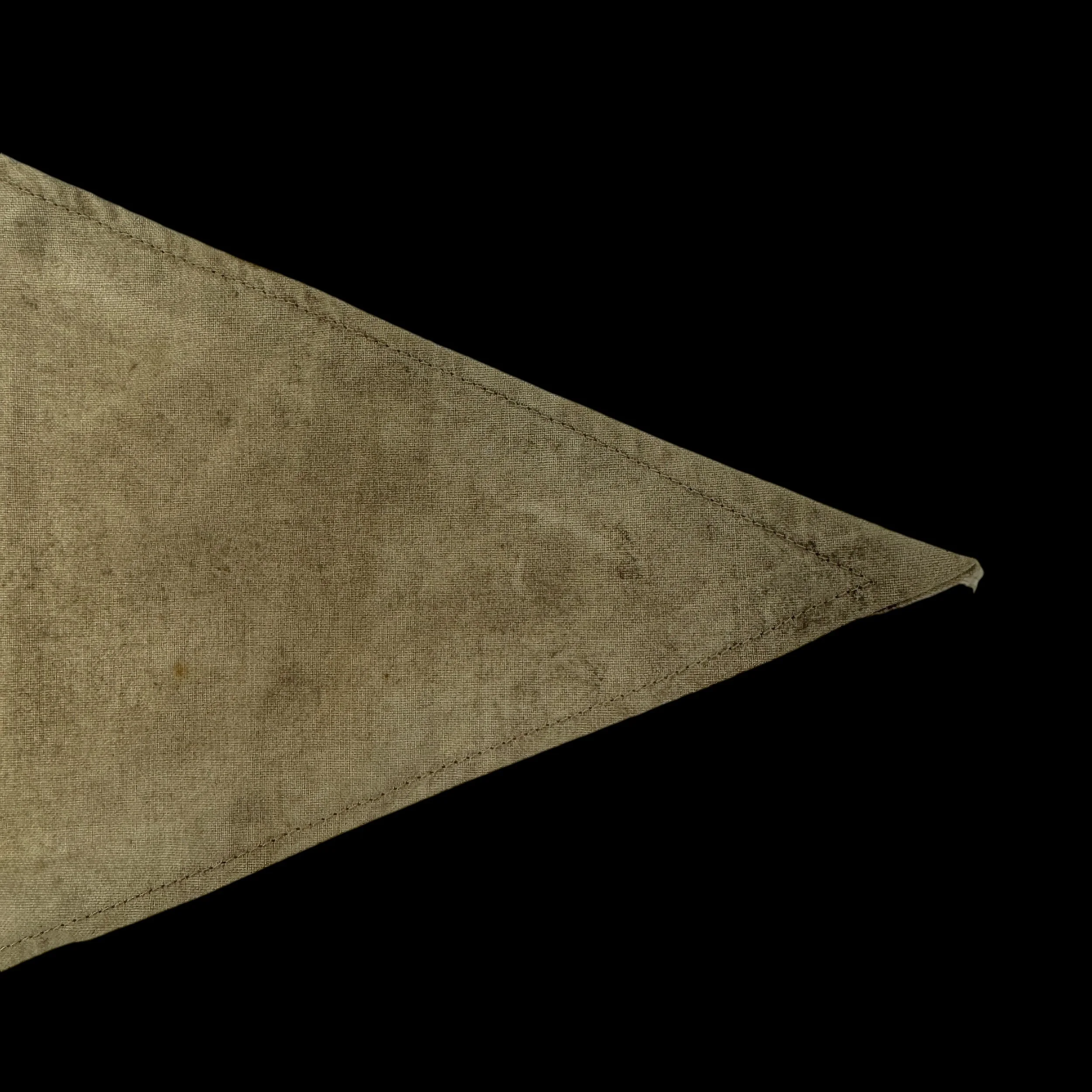
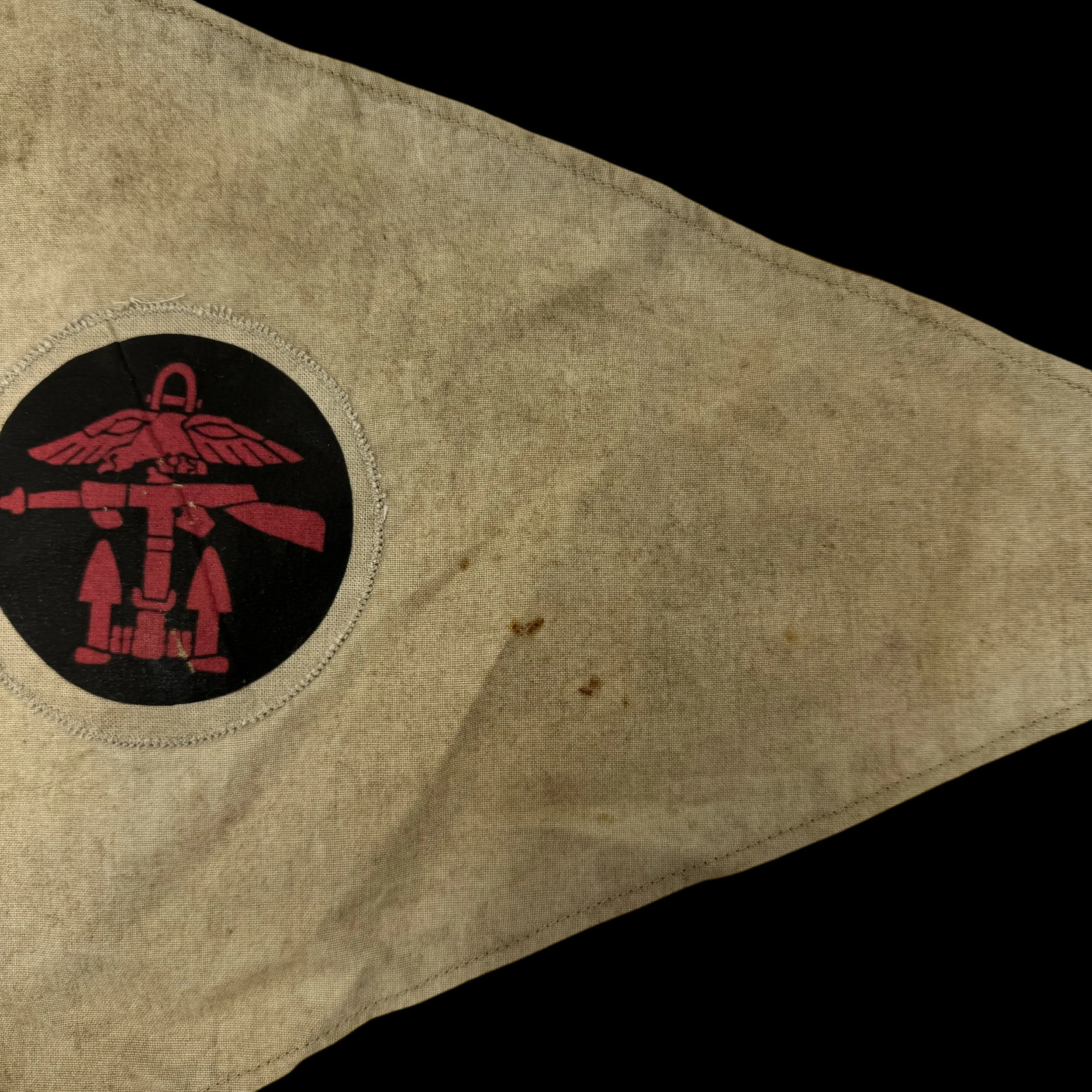

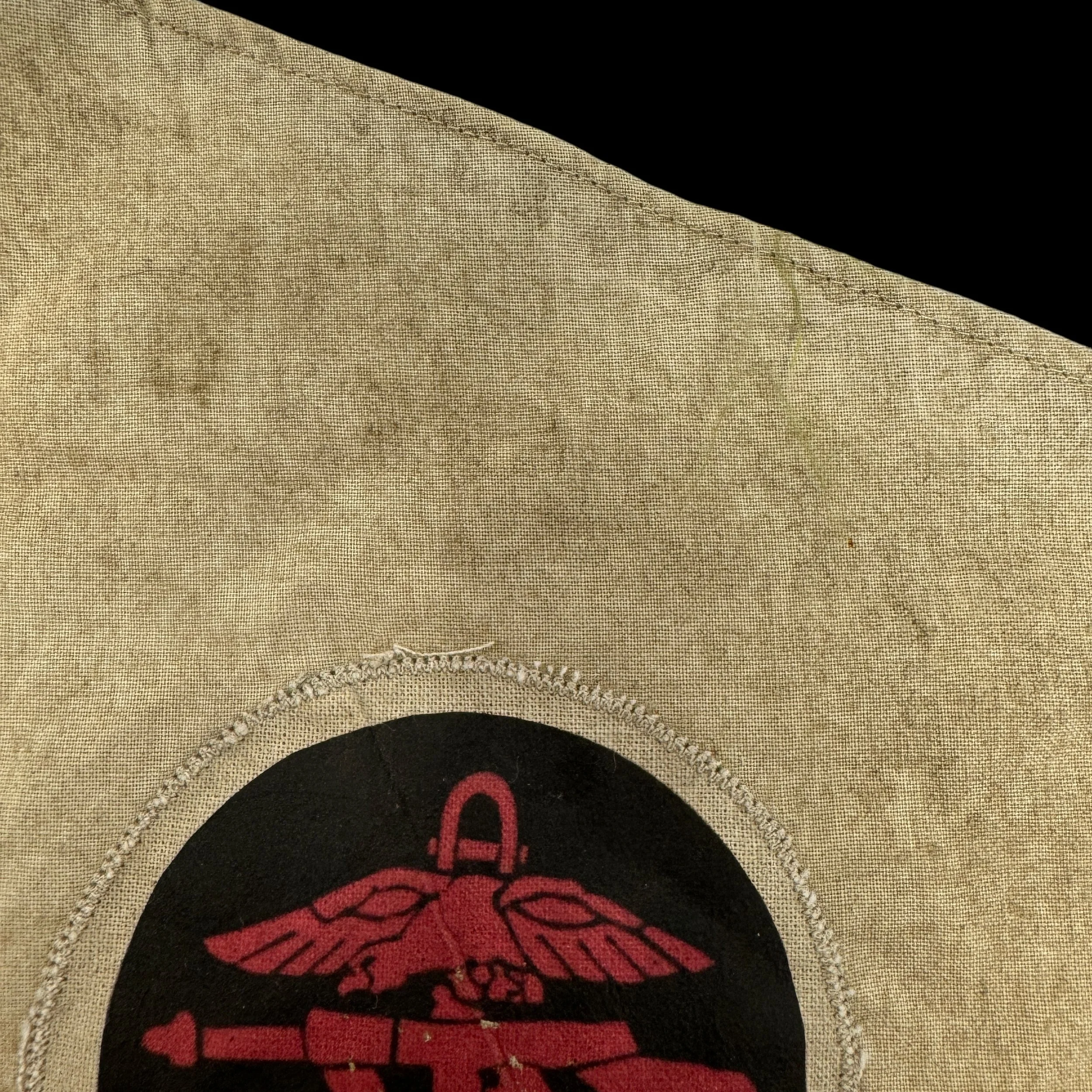
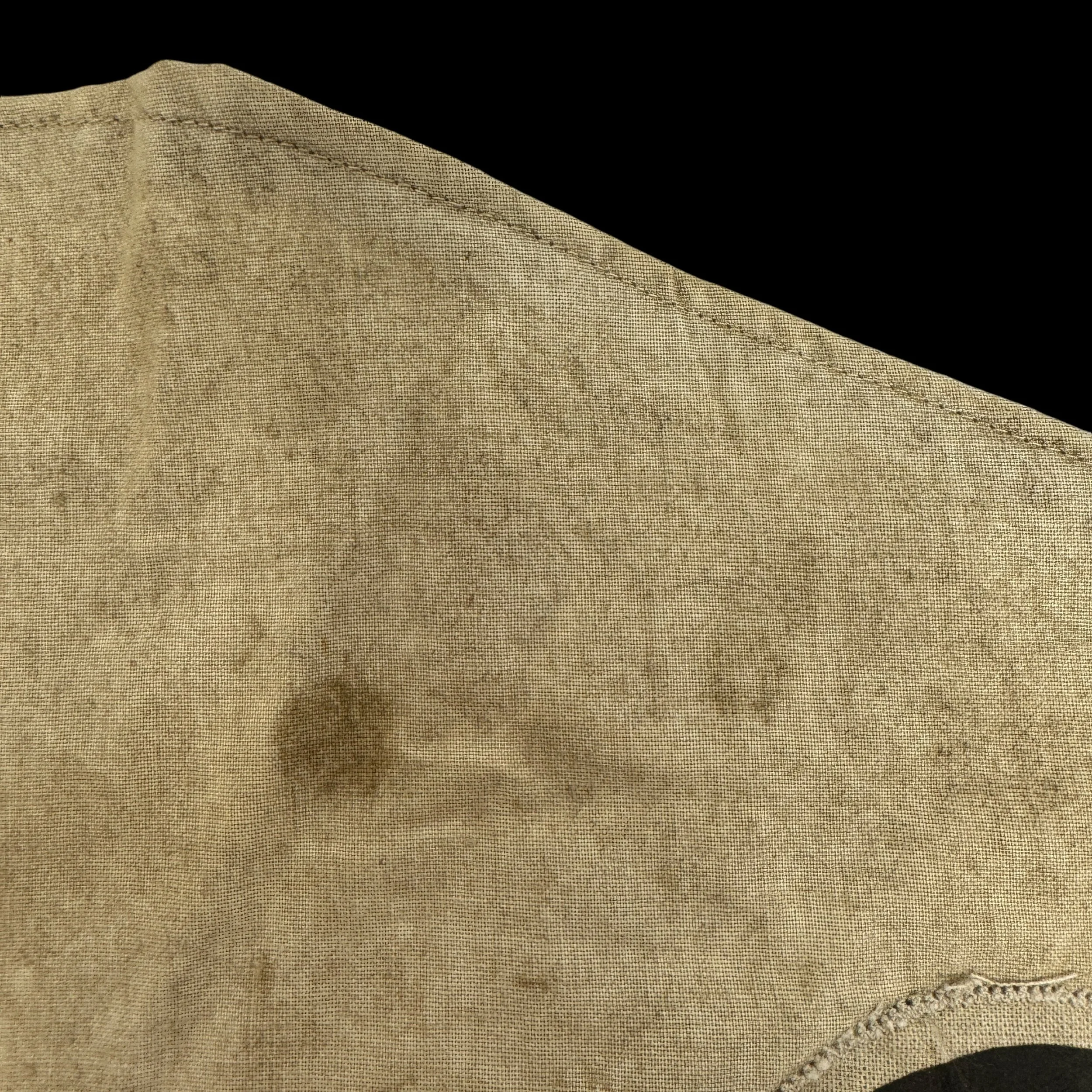
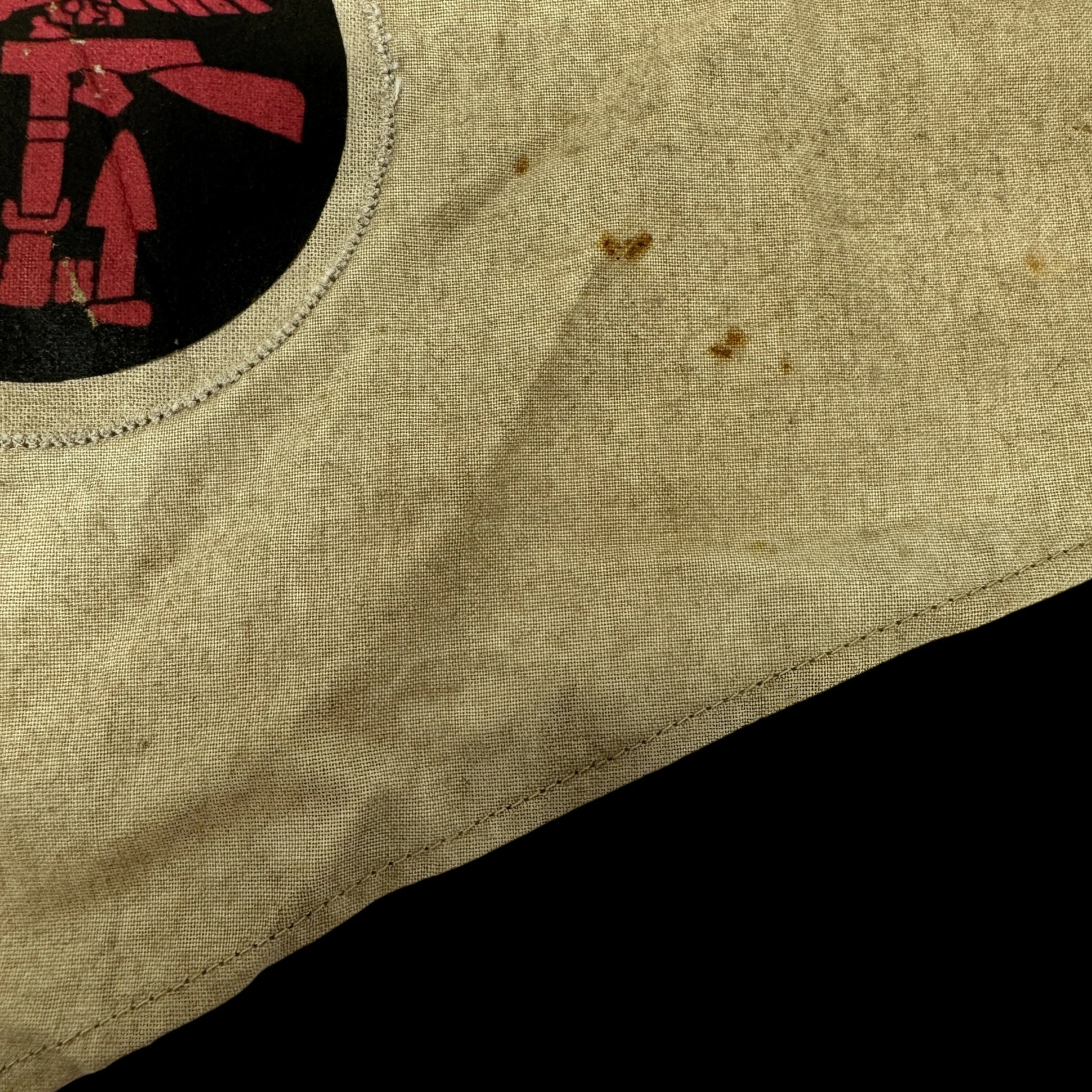
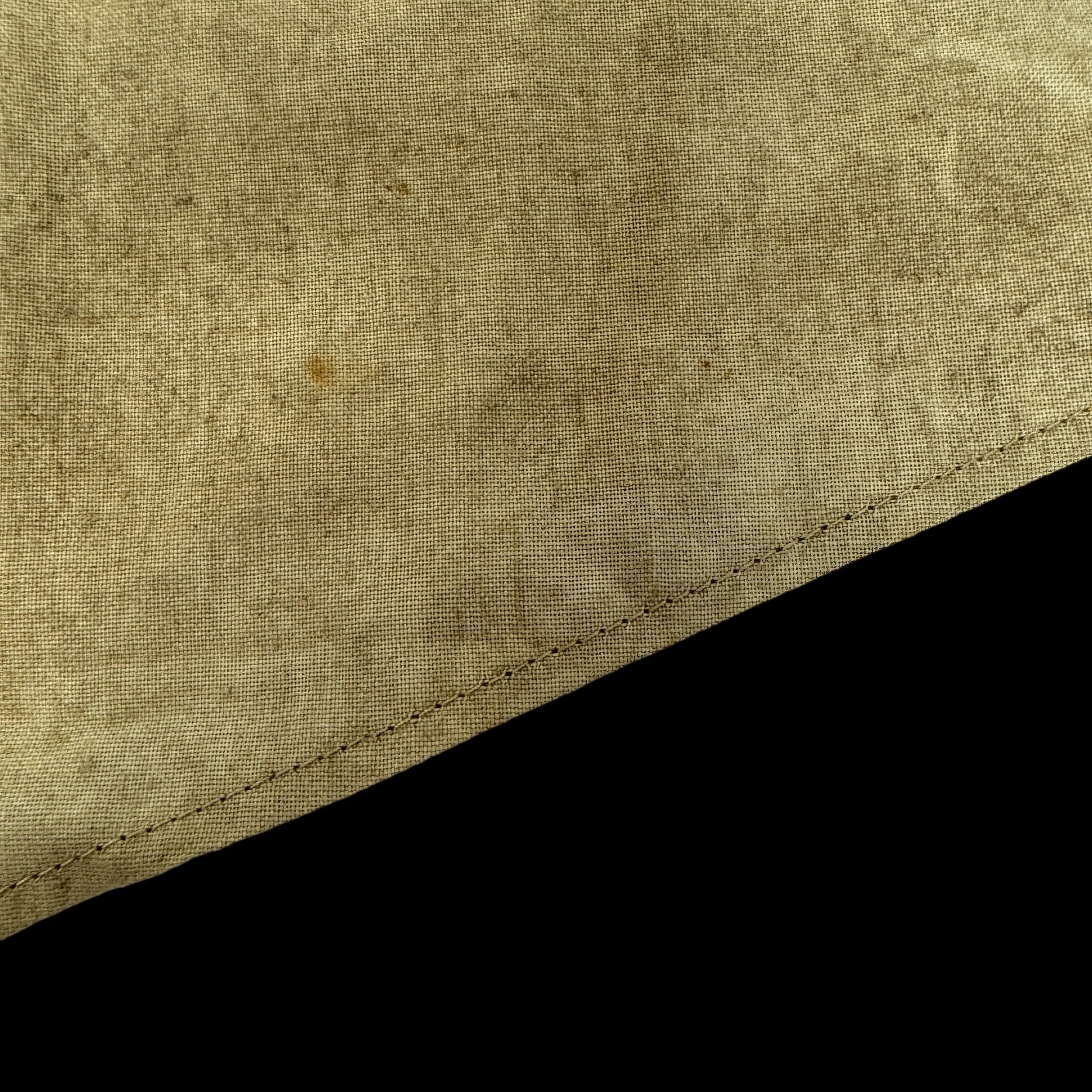
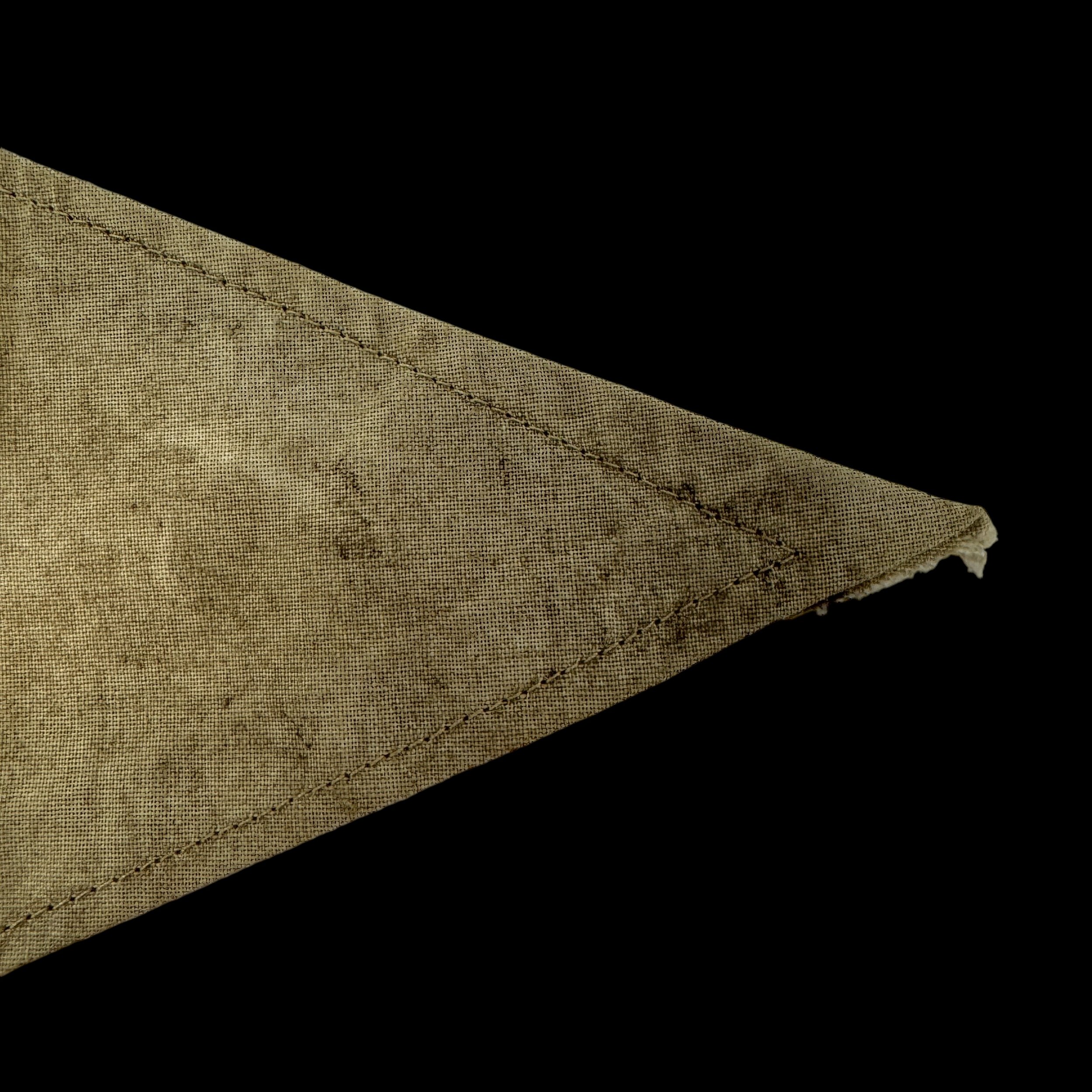

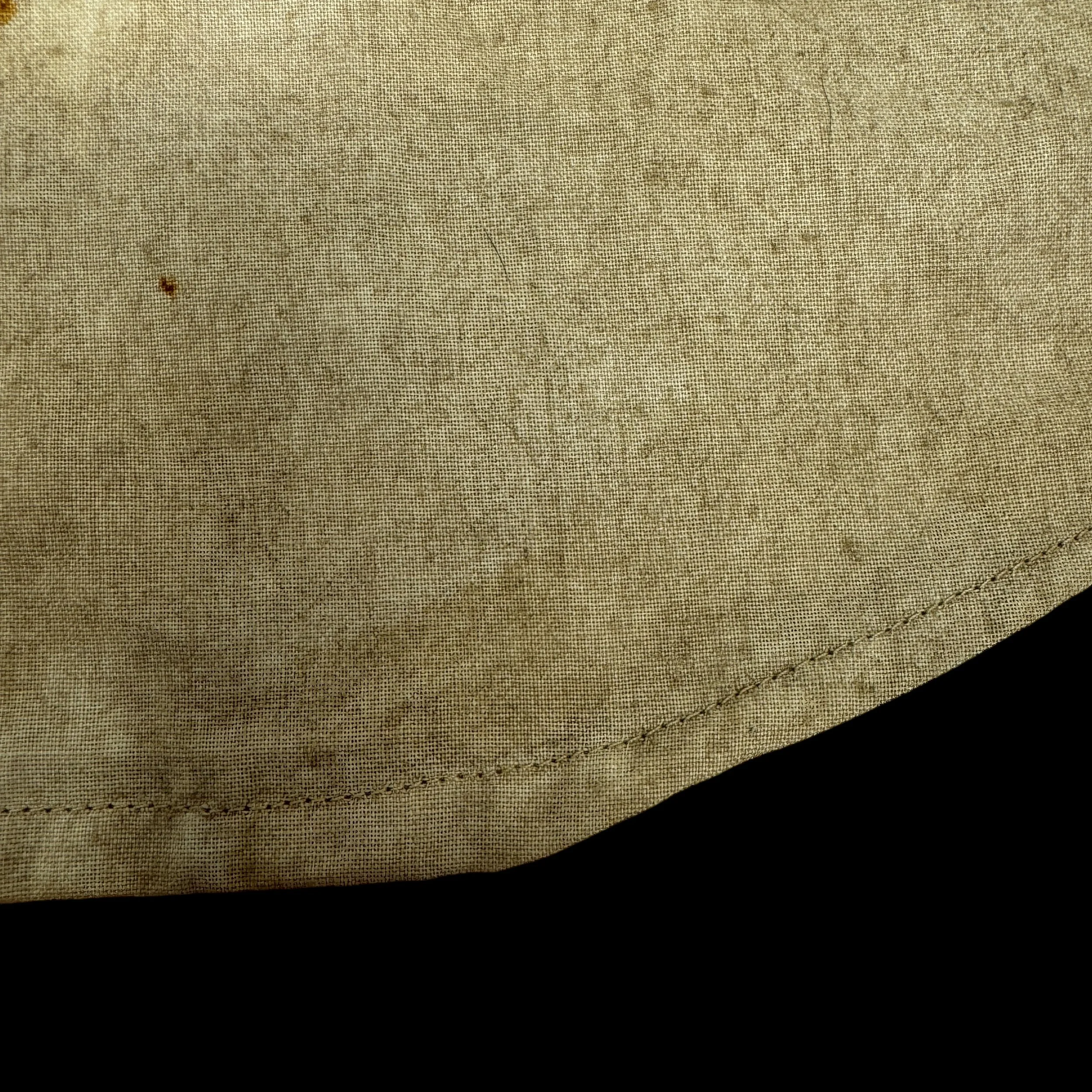
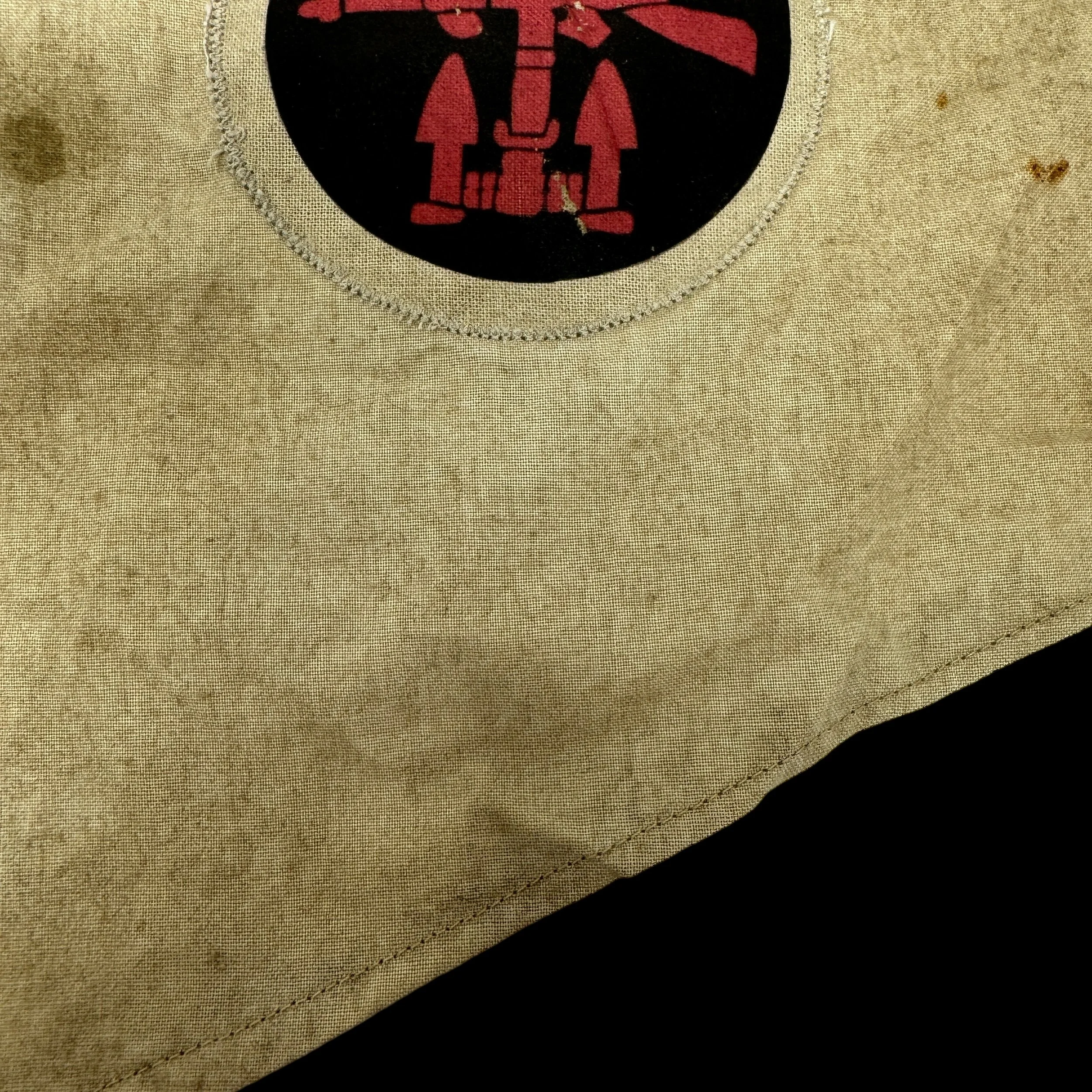
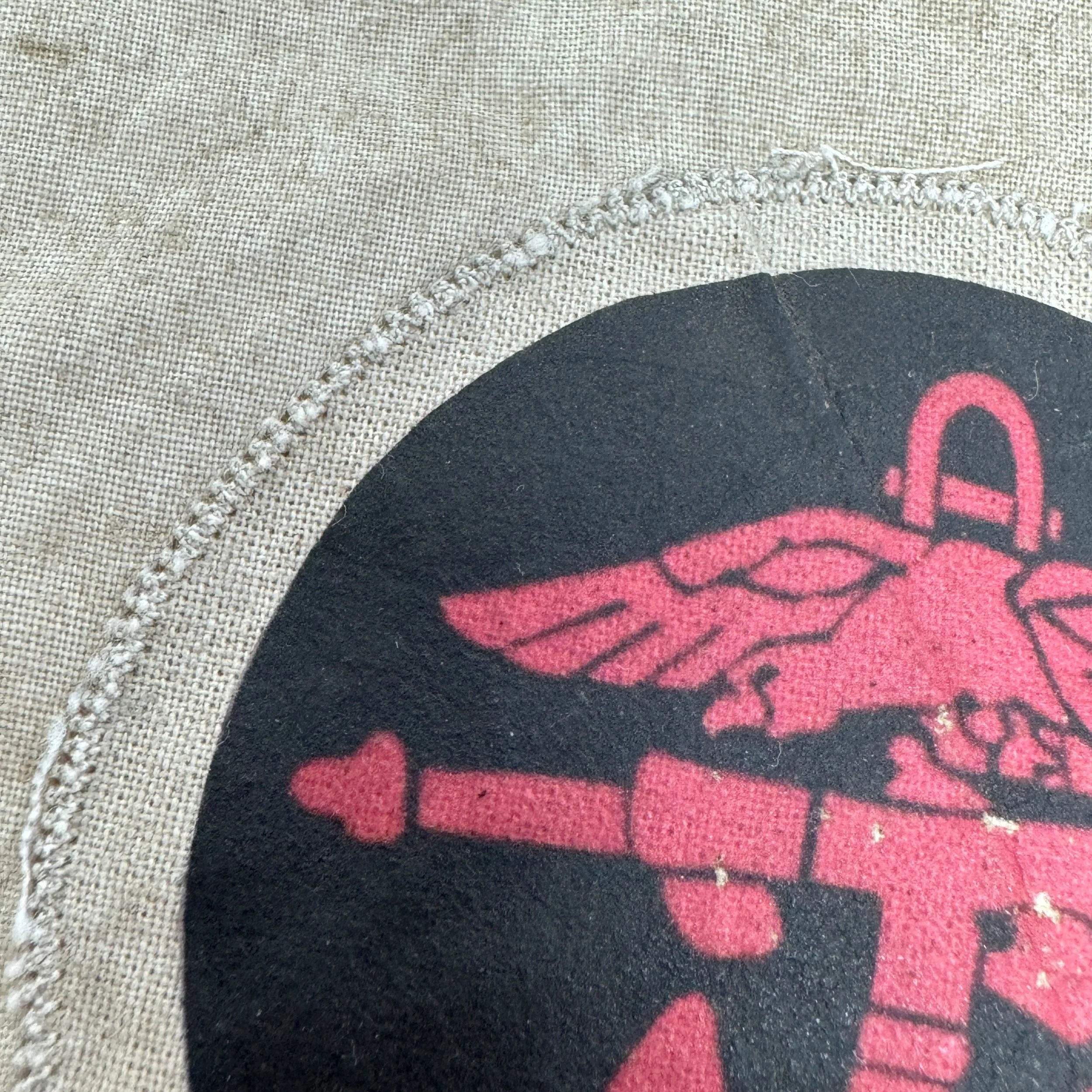

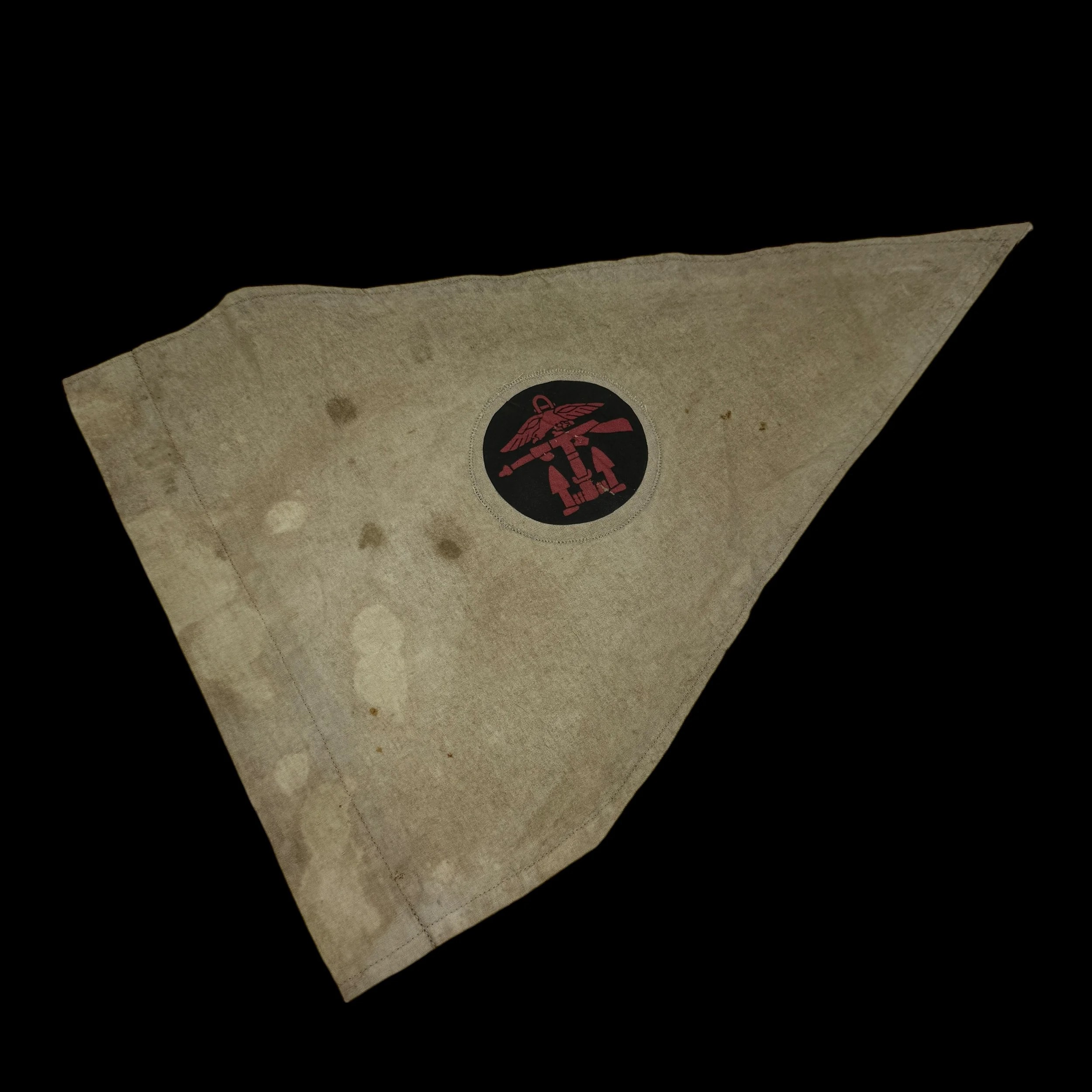
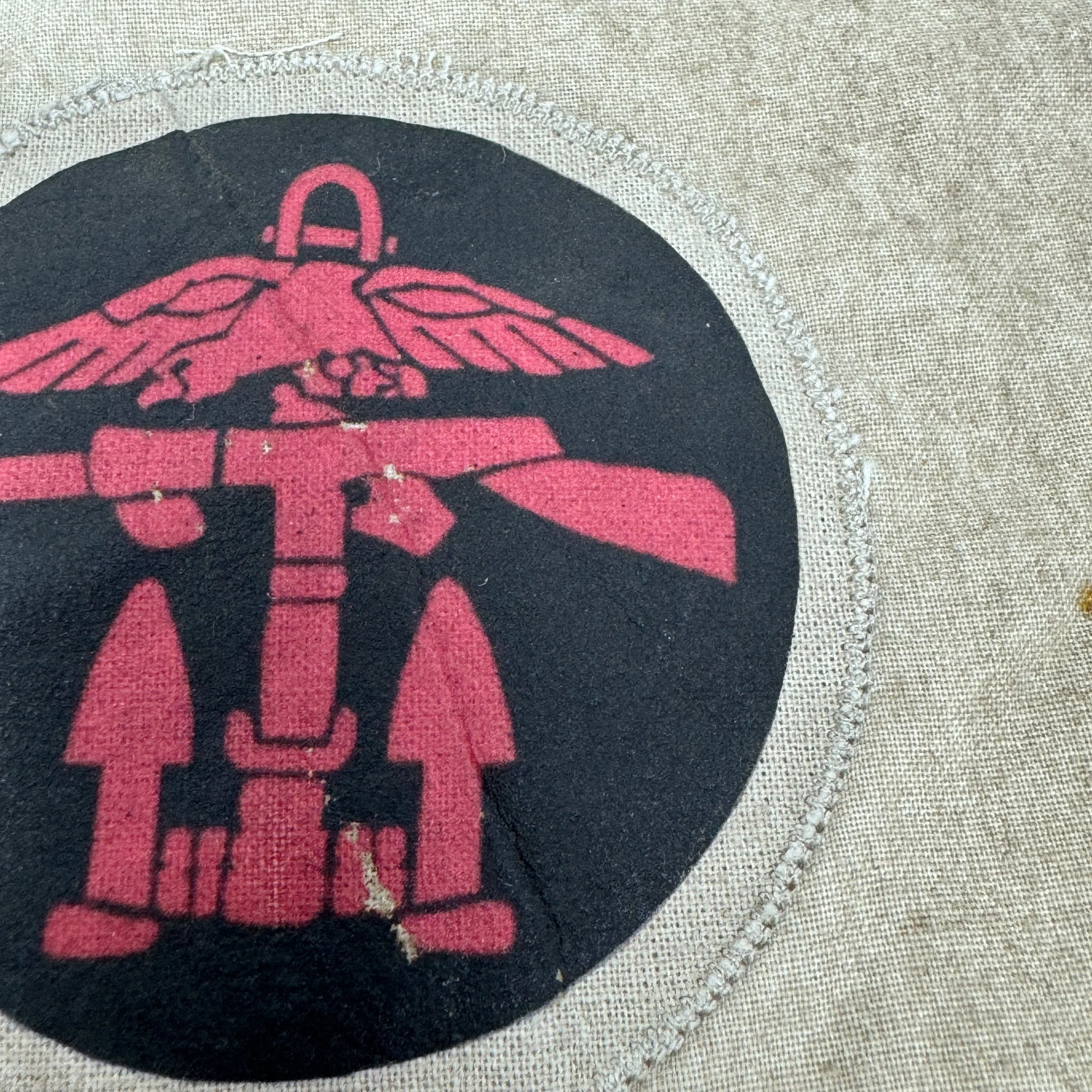
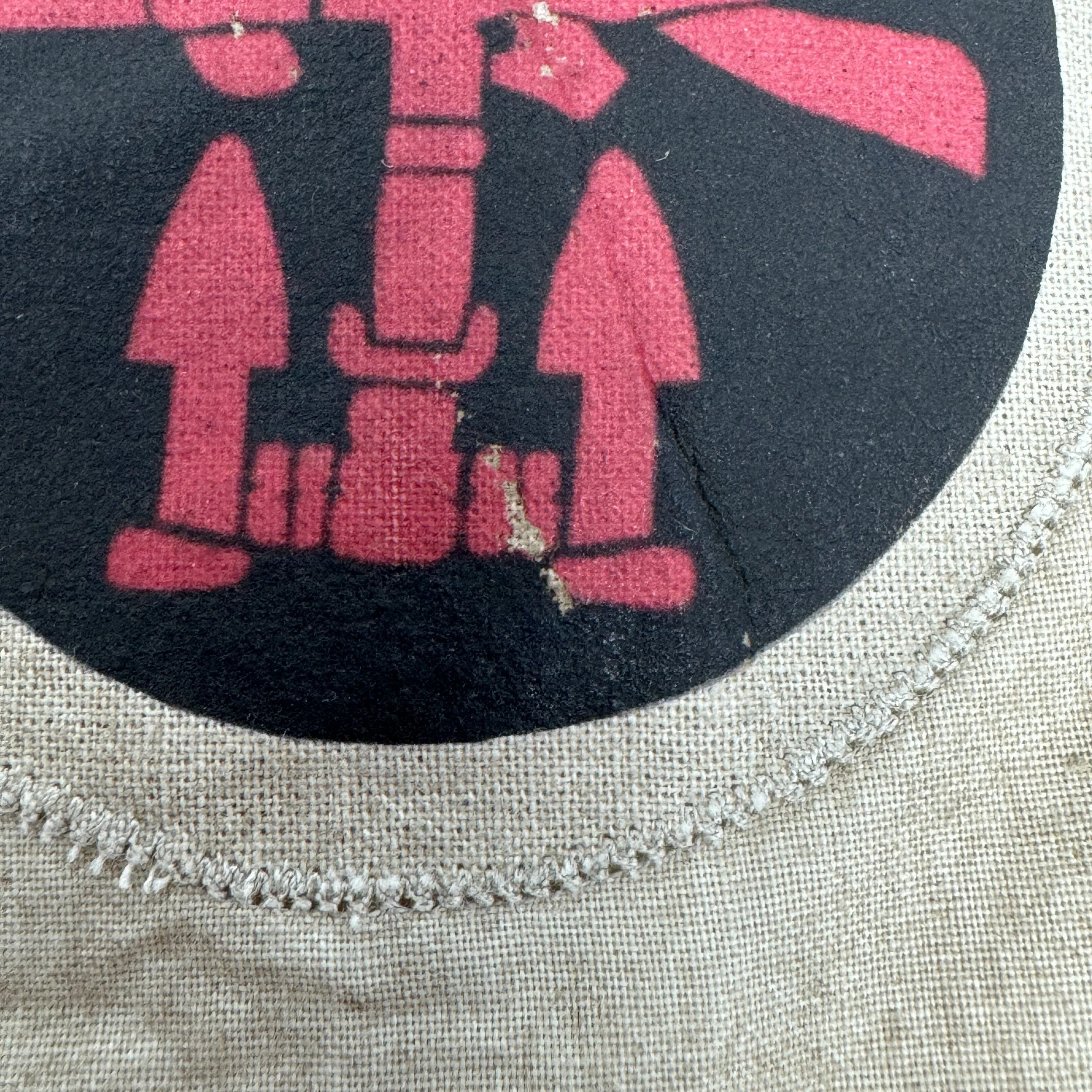



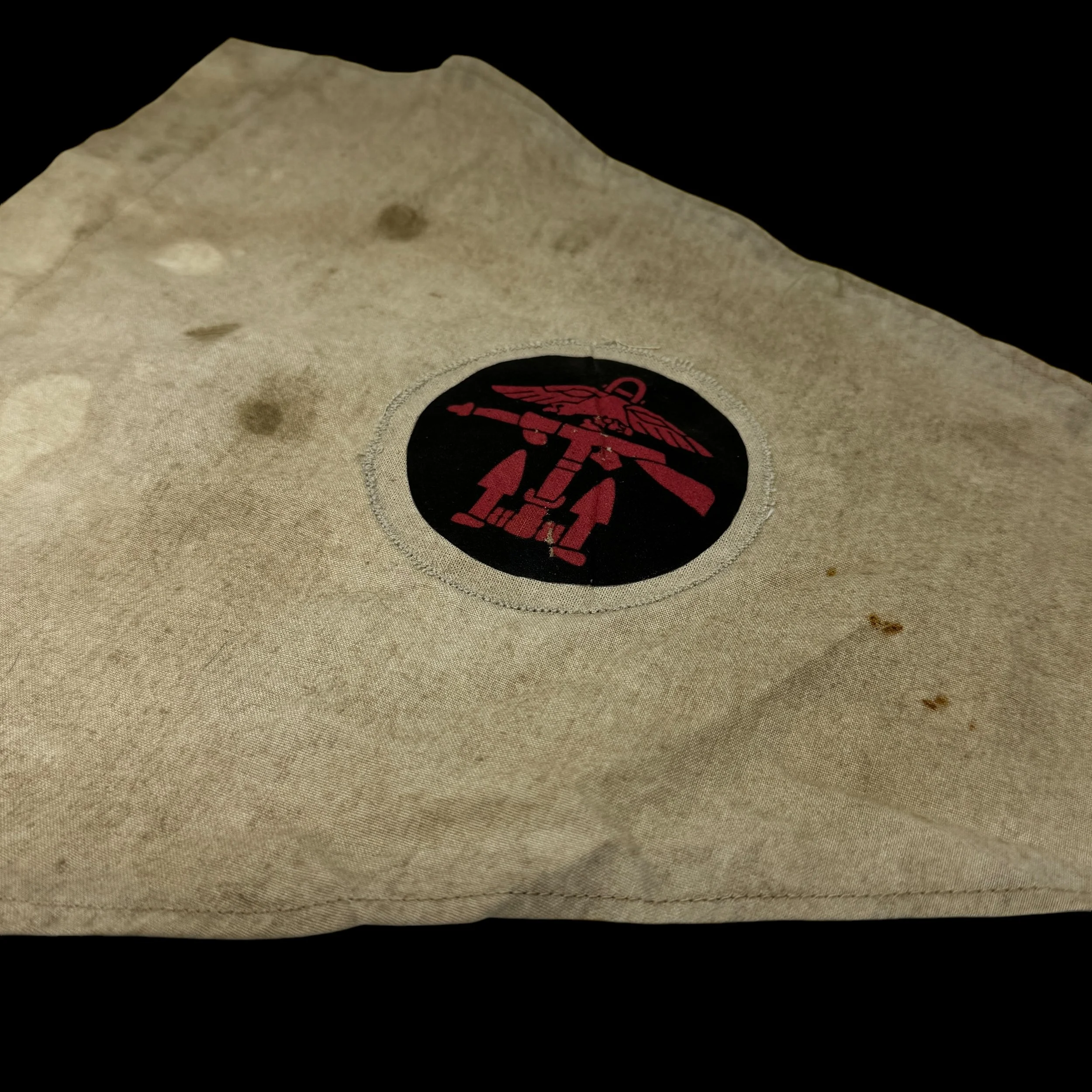

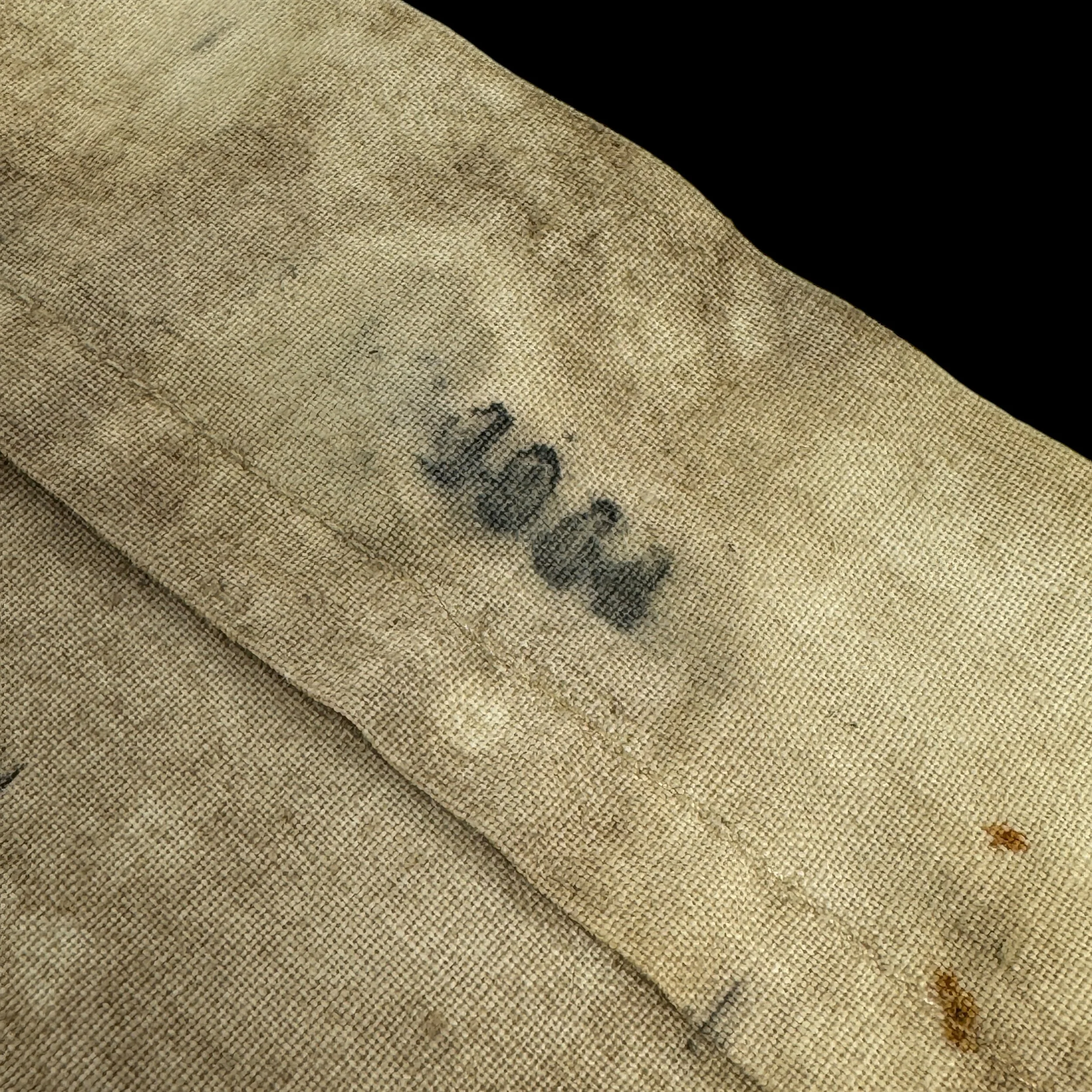
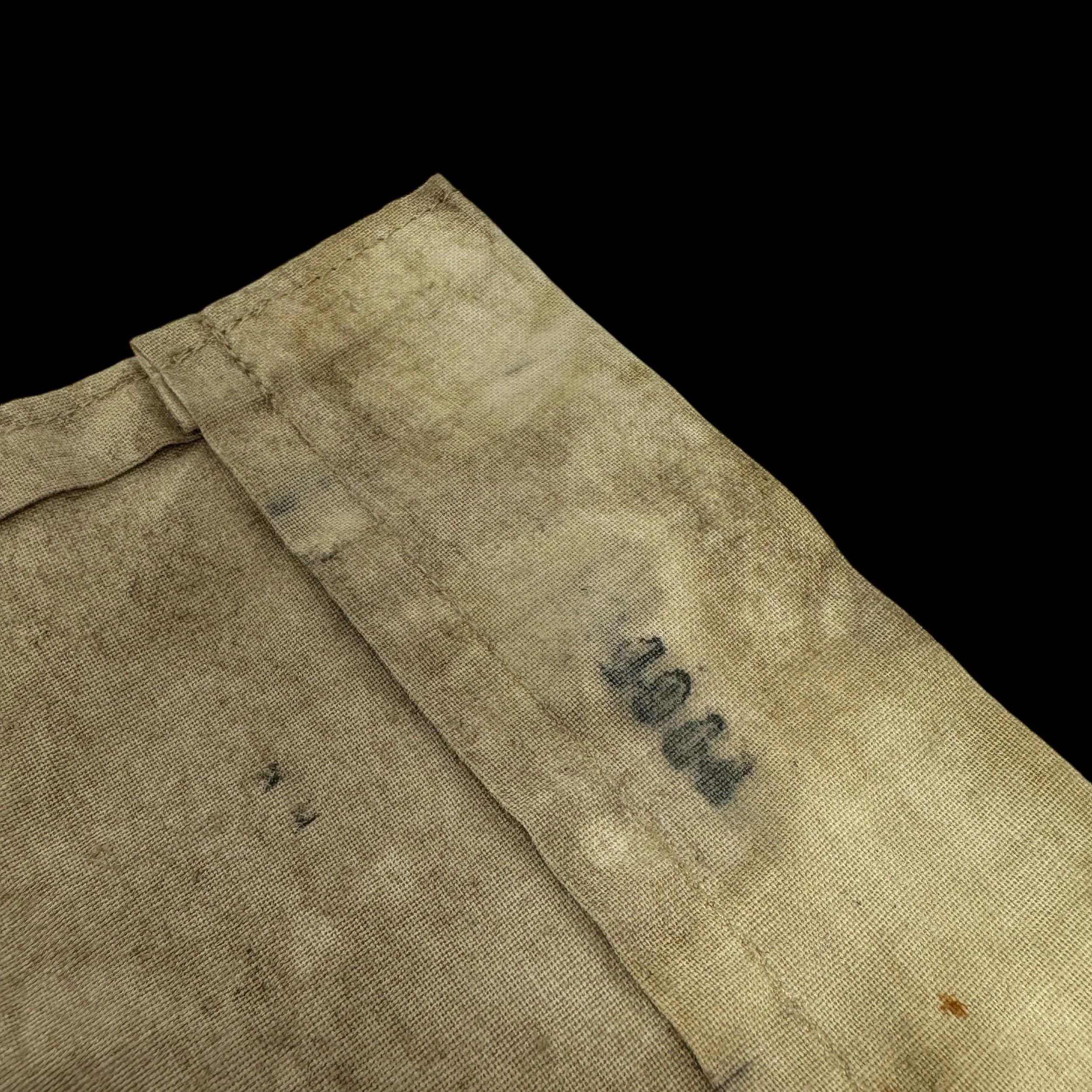

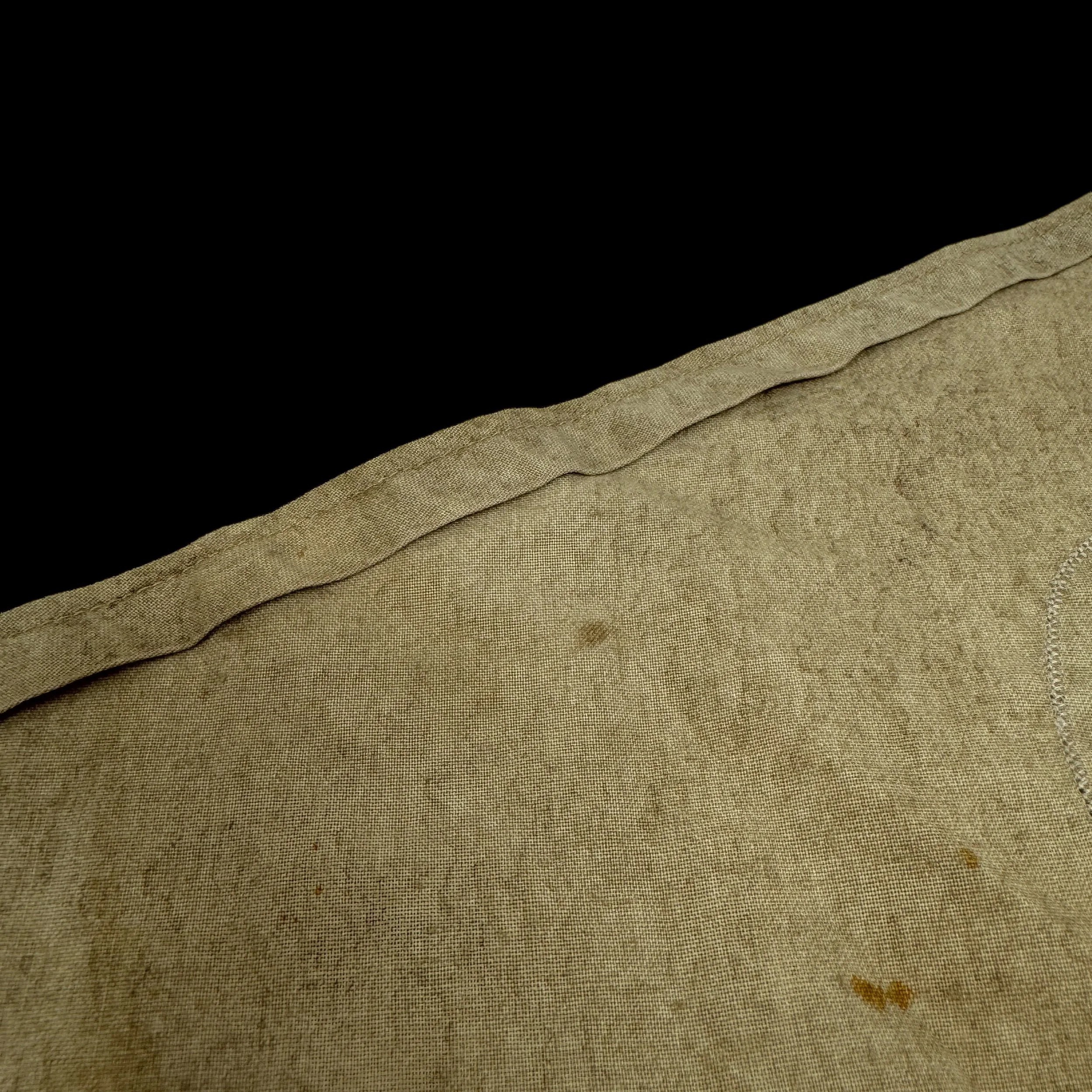
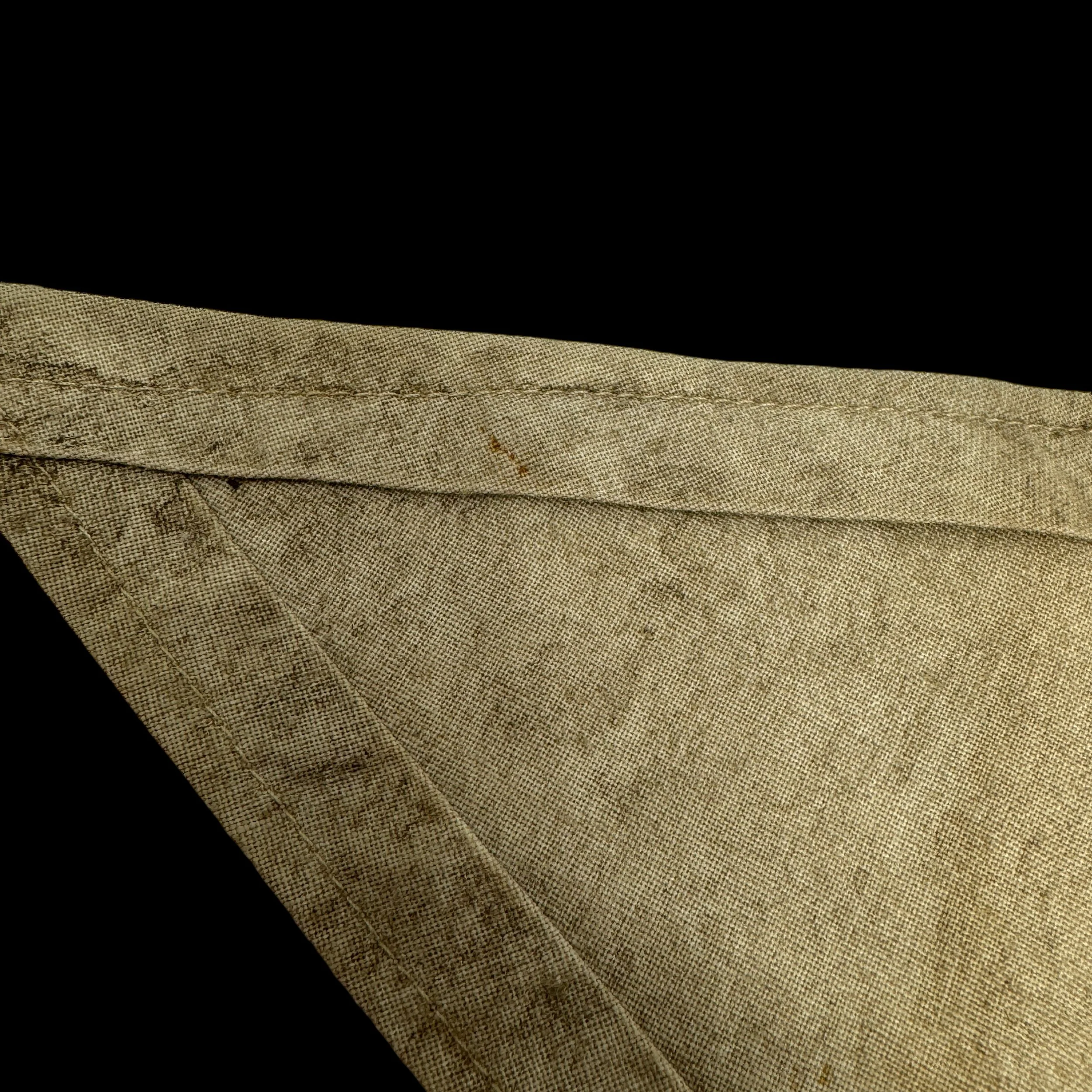
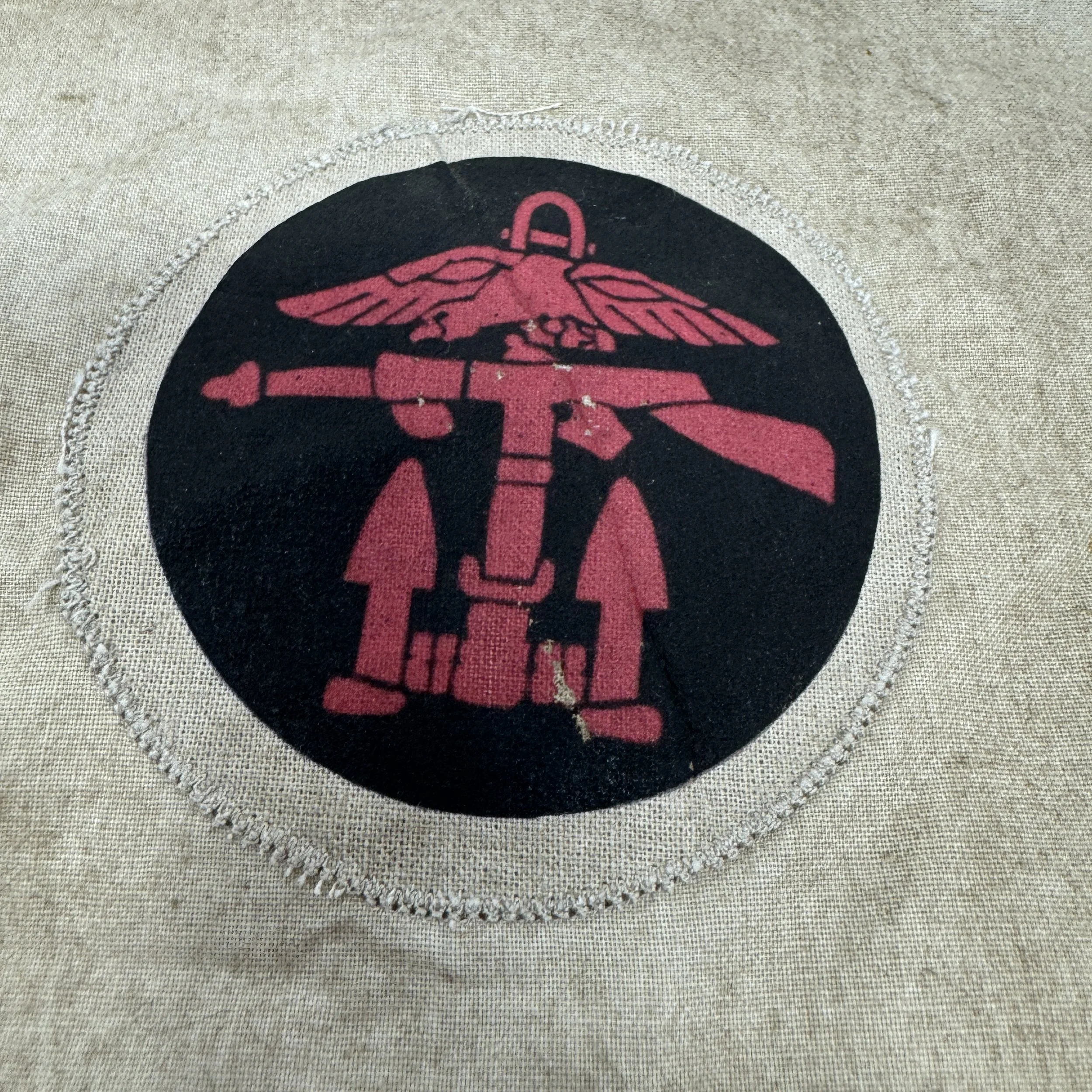
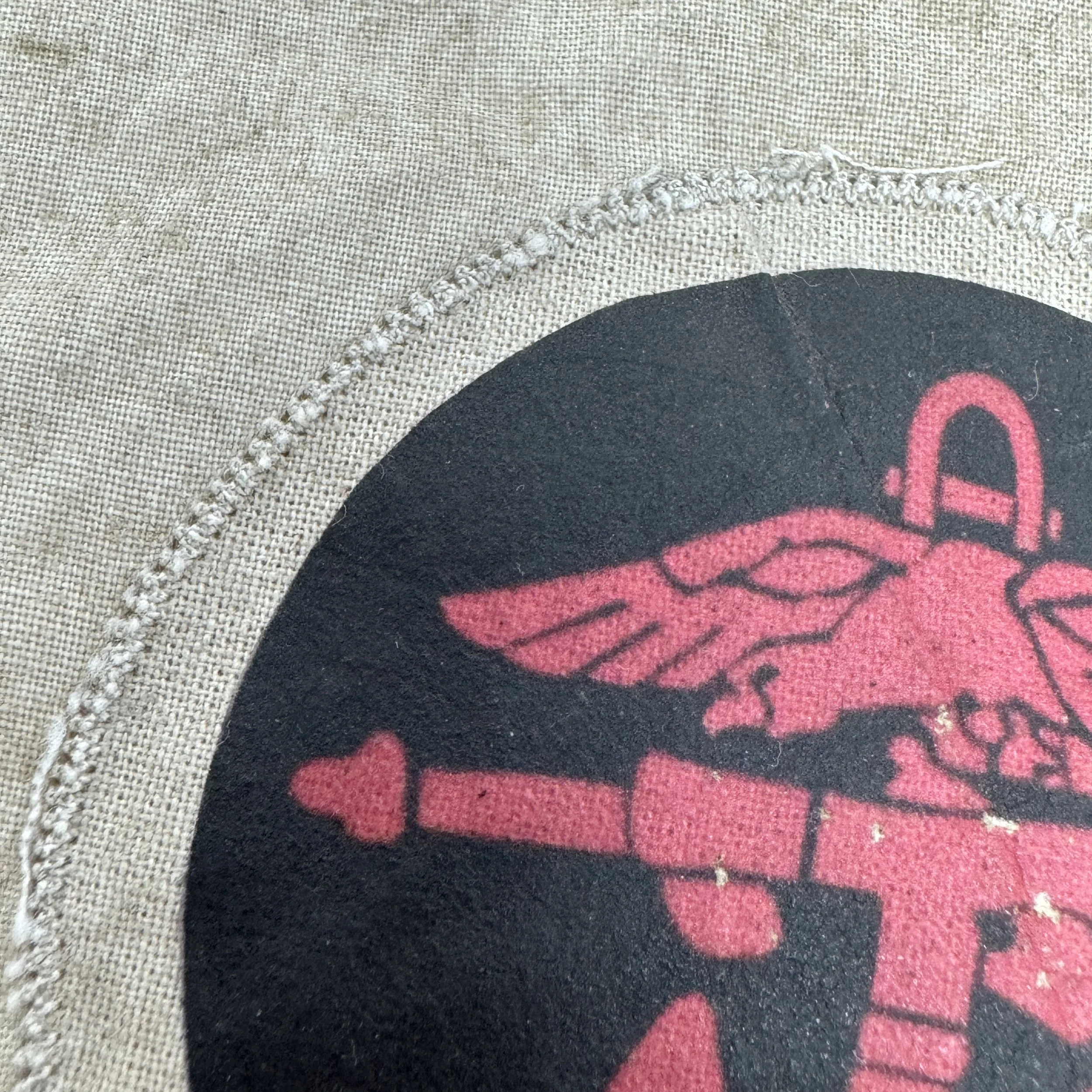
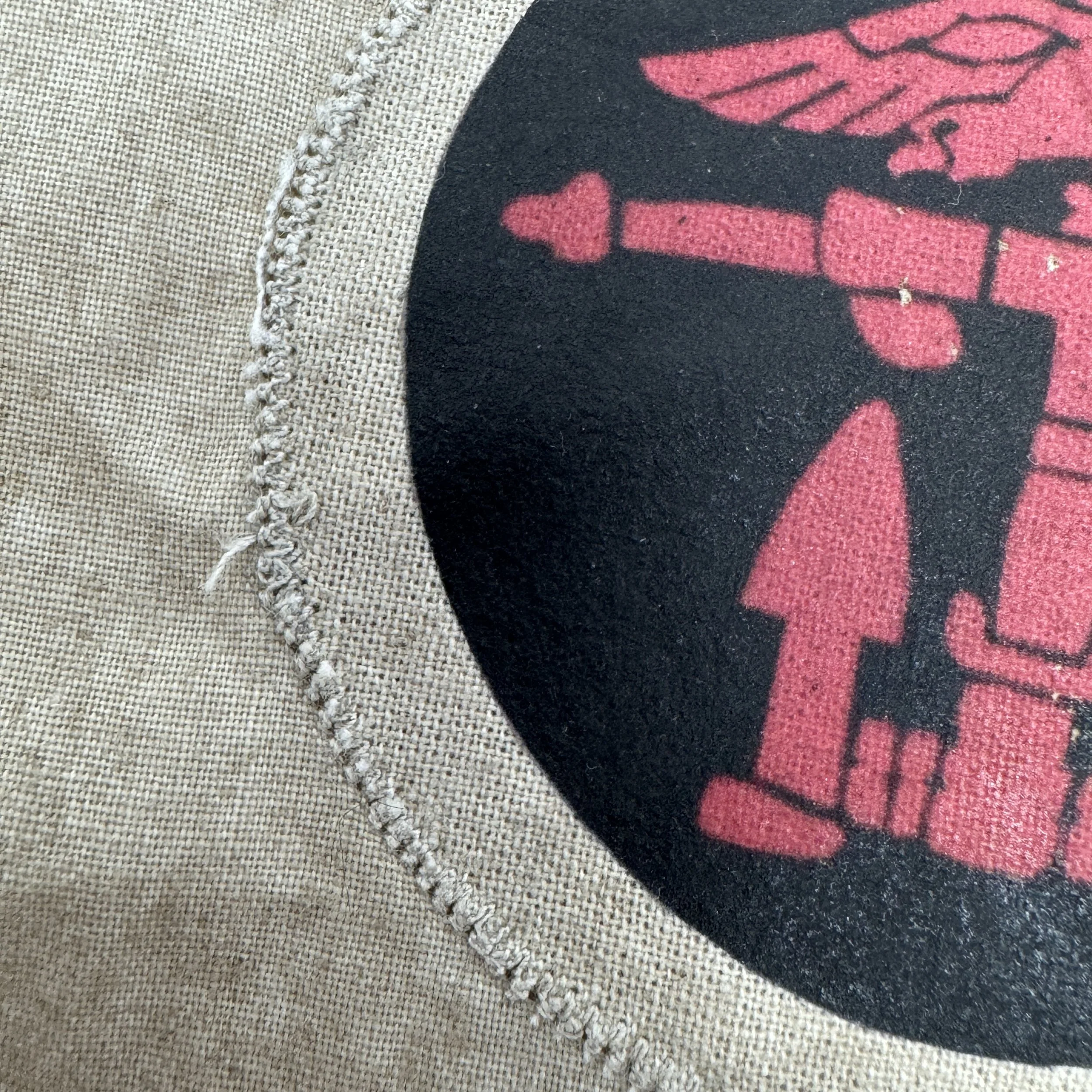
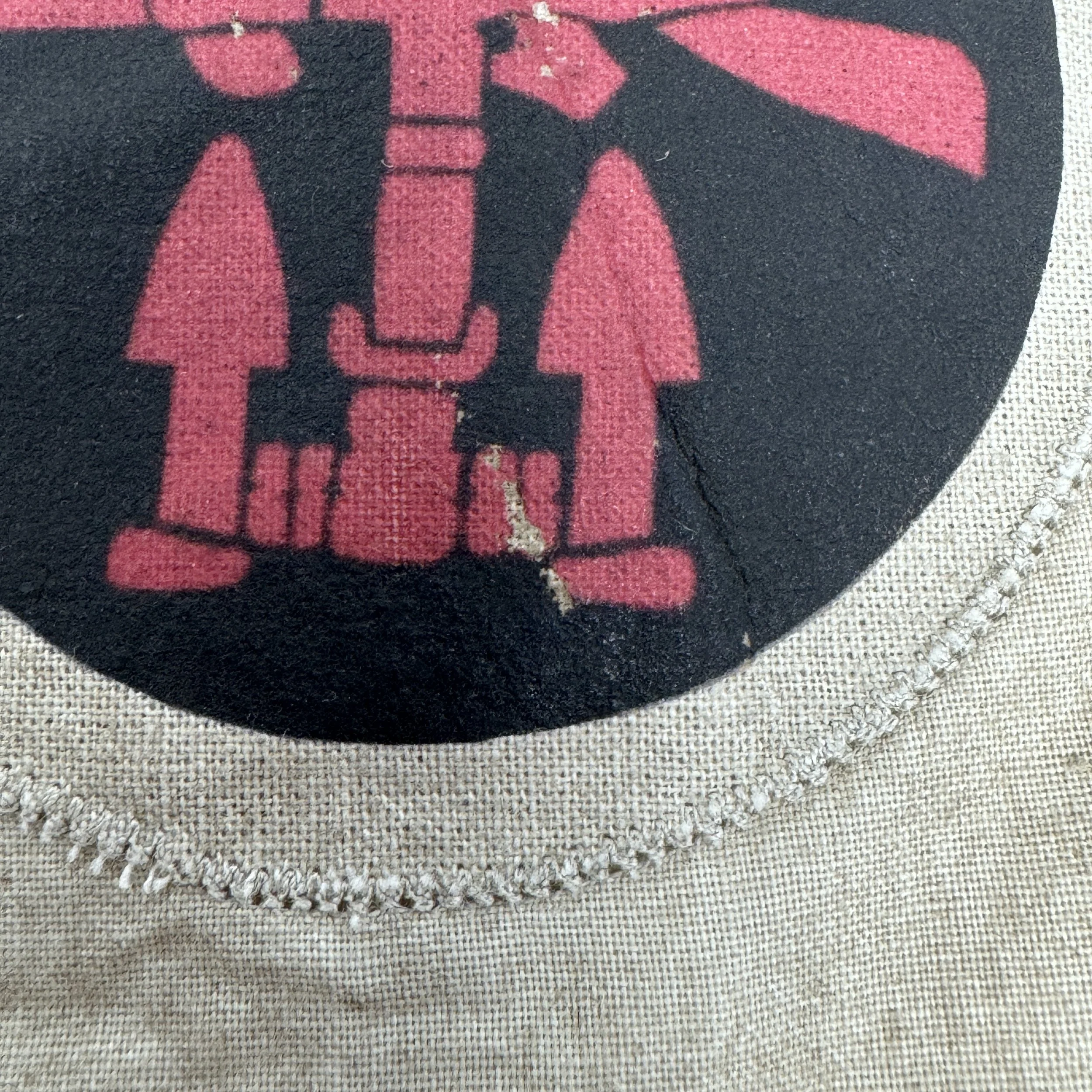
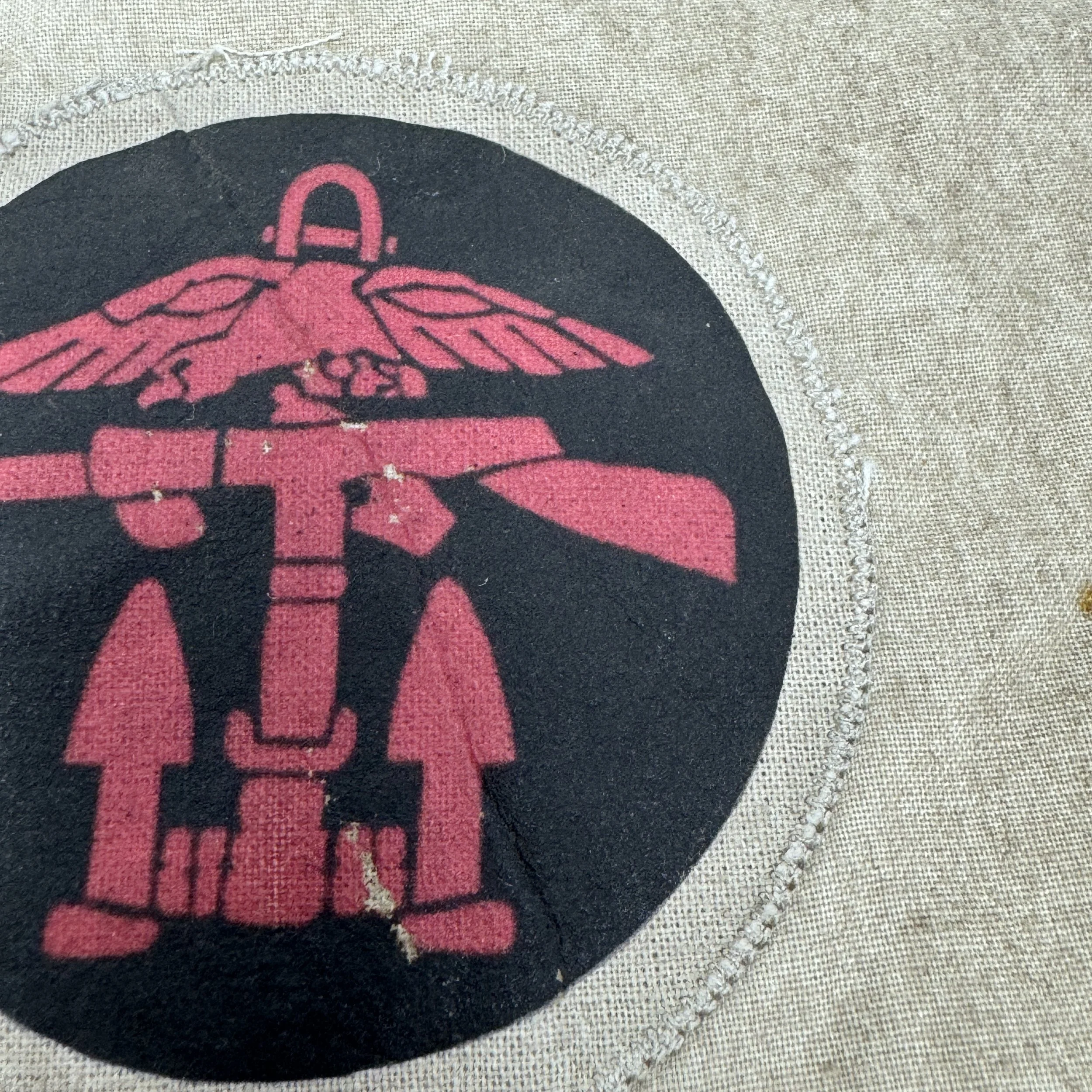

EXTREMELY RARE! WWII D-Day Operation Overlord 1944 Dated Combined Operations Headquarters (COHQ) Flag - Invasion of Normandy Operations HQ Flag
Comes with a hand-signed C.O.A.
This extremely rare and once-in-a-lifetime museum-grade WWII artifact is an original 1944 dated Combined Operations Headquarters (COHQ) flag. Established in 1940 under the direction of Winston Churchill, the Combined Operations Headquarters was responsible for coordinating and executing TOP SECRET operations that required the cooperation of multiple branches of the armed forces—Army, Navy, and Air Force—often involving amphibious warfare, special commando raids, and covert reconnaissance missions. Their work laid the groundwork for some of the most critical operations in WWII, including the D-Day landings in 1944. Dated 1944, this COHQ flag was flown as the Combined Operations Headquarters was central to planning and carrying out a variety of amphibious assaults, commando raids, and covert operations of some of the most infamous D-Day (Operation Overlord) Invasion of Normandy top secret operations including Operation Postage Able, Exercise Tiger, Operation Gambit, the development of Mulberry harbours, and Operation Pluto.
By 1944, the Combined Operations Headquarters had become a central figure in the planning and execution of the Allied invasion of German-occupied Europe. The COHQ played a vital role in Operation Overlord, the Normandy invasion, providing both strategic planning and operational oversight for the largest amphibious assault in history.
The COHQ’s involvement in Operation Neptune, the naval aspect of D-Day, was particularly critical. The techniques they had developed for amphibious landings were employed on a massive scale, with thousands of landing craft, ships, and naval forces converging on the beaches of Normandy on June 6, 1944. COHQ’s experience with landing craft and beach landings ensured that the operation ran as smoothly as possible under the chaotic conditions of the invasion.
Additionally, the COHQ planned and executed several key operations that facilitated the success of D-Day:
1944 Combined Operations Headquarters (COHQ) TOP SECRET D-Day Operations:
Operation Postage Able (16-18 January 1944):
"The covert reconnaissance of Normandy's beaches by X-class submarines laid the foundation for the precision of the D-Day landings, providing vital intelligence on the enemy's defenses and terrain."
Exercise Tiger (22-28 April 1944):
"In the shadow of disaster, Exercise Tiger served as a tragic yet essential rehearsal, reminding the Allies of the unforgiving nature of war, as over 700 soldiers lost their lives in a deadly German torpedo attack."
Operation Gambit (4-6 June 1944):
"Silent sentinels beneath the waves, X-class submarines guided the D-Day fleet to Sword and Juno beaches, their lights and signals ensuring that the largest amphibious assault in history struck with precision."
The Development of Mulberry Harbours:
"A marvel of wartime engineering, the Mulberry harbours transformed the Normandy coastline, turning it into a vital lifeline for Allied supplies, without which the liberation of Europe could have faltered."
Operation Pluto:
"Stretching beneath the English Channel, Operation Pluto's pipelines became the arteries of the Allied advance, delivering the fuel that kept the liberation of Europe moving forward."
Combined Operations Headquarters (COHQ) flags were typically flown at COHQ strategic headquarters and COHQ command posts, marking critical locations during key operations. Due to their specialized function, these flags were kept in secure, high-level settings and were never mass-produced, with only a handful ever made each year.
The COHQ played a central role in some of the most pivotal operations of World War II, including amphibious landings, commando raids, and covert missions like the Normandy invasion. A COHQ flag, as a witness to high-level strategic planning, carries immense historical significance. For collectors and museums, it offers a direct connection to the decision-making processes that shaped the course of the war and ultimately secured Allied victory.
Only a small number of COHQ flags have surfaced since the war, and those that have are preserved in highly prestigious private museum collections. This particular flag is the first Combined Operations Headquarters flag to enter the public market in decades. With its stamped 1944 date and exceptional rarity, this COHQ flag stands as an exquisite and invaluable piece of D-Day and Normandy invasion history.
Operation Postage Able (16-18 January 1944)
One of the less well-known yet crucial operations coordinated by the COHQ in 1944 was Operation Postage Able, a covert reconnaissance mission involving X-class midget submarines. This mission, executed between January 16-18, 1944, involved deploying the X-class submarines X-20 and X-23 to reconnoiter the Normandy beaches, where the D-Day landings were to take place. The submarines were tasked with gathering detailed intelligence on tidal conditions, beach defenses, and potential landing zones for the Allied invasion force.
The X-class submarines, each operated by a small crew, were incredibly valuable for their ability to approach enemy coastlines undetected. During Operation Postage Able, the crews of X-20 and X-23 covertly gathered samples of sand, analyzed beach gradients, and mapped underwater obstacles that could obstruct the D-Day landings. This critical intelligence informed the planning of Operation Overlord and allowed Allied commanders to better understand the conditions that their landing craft and troops would face during the invasion.
The success of Operation Postage Able demonstrated the value of unconventional reconnaissance methods and highlighted the COHQ's ability to innovate in response to the unique challenges of amphibious warfare.
Exercise Tiger (22-28 April 1944)
While the COHQ achieved many successes, some operations also exposed the difficulties and dangers of large-scale military coordination. Exercise Tiger, conducted between April 22-28, 1944, was one of the most tragic examples of the potential for disaster in the run-up to D-Day. Exercise Tiger was a large-scale rehearsal for the D-Day landings, focusing on simulating the amphibious assault on Utah Beach, one of the main landing zones in Normandy.
Taking place on the southern coast of England, Exercise Tiger was designed to train U.S. forces in amphibious operations, testing the landing craft, timing, and coordination required for a successful assault. However, the exercise turned into a catastrophe when German E-boats intercepted the convoy of LSTs (Landing Ship, Tank) transporting U.S. troops to the practice landing sites. The E-boats launched a surprise torpedo attack, sinking two LSTs and severely damaging another, resulting in the deaths of over 700 American servicemen.
The tragedy of Exercise Tiger highlighted the perils of war and underscored the complexity of amphibious operations. It forced the COHQ and Allied commanders to reevaluate their security measures and refine their plans ahead of the Normandy invasion, ensuring that such mistakes would not be repeated on D-Day itself.
Operation Gambit (4-6 June 1944)
A key role of the Combined Operations Headquarters in the actual D-Day landings on June 6, 1944, was Operation Gambit, another mission that employed X-class submarines. This operation took place on June 4-6, just before the main landings. X-20 and X-23, the same submarines used in Operation Postage Able, were deployed once again, but this time their mission was to guide the Allied landing forces to Sword Beach and Juno Beach.
In the early hours of June 6, the two X-class submarines surfaced and anchored themselves off the Normandy coast. Their mission was to act as navigational beacons for the approaching invasion fleet, ensuring that the landing craft hit their designated beaches despite the poor visibility and chaotic conditions of the invasion. Equipped with telescopic masts and lights, the submarines emitted signals that helped the landing forces correct their course and avoid being swept off track by the strong currents of the English Channel.
Operation Gambit was a relatively obscure but critical component of the D-Day landings. Without the navigational assistance provided by X-20 and X-23, the landing craft could have drifted off course, leading to disorganization and possibly heavier losses during the initial assault.
Mulberry Harbours
The Mulberry harbours were an ingenious solution developed by the COHQ and British engineers to address a logistical challenge: how to supply the invasion forces in Normandy without access to a deep-water port. The Mulberries were portable, prefabricated harbors that could be assembled on the beaches of Normandy shortly after D-Day to facilitate the rapid unloading of cargo ships and landing craft.
Two Mulberry harbours were constructed: Mulberry A at Omaha Beach (American sector) and Mulberry B at Arromanches (British sector). These artificial harbors included floating roadways, piers, and breakwaters, allowing the Allies to land tanks, vehicles, ammunition, and other supplies directly onto the beach. Despite a severe storm in mid-June that destroyed Mulberry A, Mulberry B continued to function, handling an enormous volume of supplies critical to sustaining the Allied advance in France.
The development of the Mulberry harbours demonstrated the foresight and logistical expertise of the COHQ. Their ability to think beyond traditional methods of warfare and create such a vital asset underscored their role in ensuring the success of Operation Overlord.
Operation Pluto
Finally, Operation Pluto (Pipeline Under the Ocean) was another logistical triumph of the Combined Operations Headquarters and British engineers. Once the Allies had successfully landed in Normandy and established a foothold, they faced the challenge of supplying their rapidly advancing forces with fuel. The solution was Operation Pluto, which involved laying pipelines underneath the English Channel to transport petroleum from England to the Allied forces in France.
Work on the pipelines began shortly after D-Day, and by the end of 1944, pipelines were in operation, delivering fuel directly to the front lines. These pipelines were vital for keeping tanks, trucks, and aircraft operational as the Allies pushed further into German-occupied Europe.
Operation Pluto was not only a technical marvel but also a testament to the importance of logistical planning in modern warfare. It allowed the Allies to sustain their momentum during the crucial stages of the Normandy campaign and the liberation of France.
The Combined Operations Headquarters played a vital role in coordinating some of the most complex and critical operations of World War II, particularly in the lead-up to and during the Normandy invasion of 1944. Operations like Postage Able, Exercise Tiger, Gambit, the construction of Mulberry harbours, and Operation Pluto were essential to the success of D-Day and the subsequent Allied advance into Europe. The COHQ's innovative approach to warfare, combined with their ability to integrate the efforts of multiple branches of the military, demonstrated the importance of joint operations in modern warfare. Their contributions not only shaped the outcome of WWII but also left a lasting legacy in military strategy and coordination.
FULL OPERATIONAL HISTORY: The WWII Combined Operations Headquarters: A Pivotal Force in Allied Victory
The Second World War was a conflict defined by rapid advancements in technology, military strategy, and the scale of coordination required to achieve victory. At the heart of many of the Allied forces’ most daring and innovative operations was the Combined Operations Headquarters (COHQ). Established in 1940 and headed by notable military figures like Admiral Sir Roger Keyes and later Lord Louis Mountbatten, the COHQ became an instrumental organization in the success of numerous amphibious assaults, commando raids, and special operations throughout the war.
The COHQ embodied the spirit of joint military cooperation, integrating the strengths of the army, navy, and air force into cohesive operations designed to weaken the Axis powers. From their early operations in 1940 to their decisive involvement in Operation Overlord in 1944, the COHQ played a significant role in shaping the outcome of the war.
The Creation of the Combined Operations Headquarters
The idea behind the creation of the Combined Operations Headquarters was born out of necessity. As the war progressed, it became clear that traditional land or naval strategies were not sufficient to deal with the multifaceted challenges posed by the Axis powers. The rapid fall of France in 1940, the German blitzkrieg in Europe, and the threat of invasion to the British Isles highlighted the need for an organization capable of coordinating joint operations between the different branches of the military. This led to the establishment of the COHQ in July 1940 under the direction of Admiral Sir Roger Keyes, a highly decorated officer from World War I known for his aggressive and daring style of warfare.
The main purpose of the COHQ was to facilitate and plan combined operations, particularly those involving amphibious warfare, commando raids, and raids against coastal and inland targets in enemy-occupied Europe. It quickly became clear that for the Allies to take the fight to the Axis, they would need to develop a new way of waging war that involved the close coordination of land, sea, and air forces.
Under Keyes, and later Lord Louis Mountbatten, who took over in 1941, the COHQ began to design and oversee a number of special operations that would redefine the way the Allies conducted their military campaigns. Mountbatten, in particular, was instrumental in expanding the scope of the COHQ’s influence, promoting the use of highly trained commandos, amphibious landings, and innovative technologies.
Early Operations (1940-1942)
The early years of the Combined Operations Headquarters saw a mixture of successes and setbacks. As the organization was finding its footing, it launched several small-scale operations that would set the tone for the larger amphibious assaults later in the war.
One of the first significant operations overseen by the COHQ was Operation Collar in June 1940, a small-scale raid on the French coast. Though not a major success, it set the precedent for future raids on enemy-occupied territory. The experience gained from these early missions helped the COHQ refine its strategies for future operations.
One of the most famous early Combined Operations missions was Operation Claymore, a commando raid on the Lofoten Islands in Norway in March 1941. The purpose of this raid was to disrupt German supply lines and destroy fish oil factories, which were important to the German war effort. The raid was a success, resulting in the destruction of the factories and the capture of 225 German soldiers. More importantly, it boosted British morale and demonstrated that Allied forces could strike deep into enemy-controlled territory.
The COHQ’s early successes, however, were tempered by failures. The Dieppe Raid (Operation Jubilee) of August 1942, for instance, was a catastrophic failure. Intended as a test for future large-scale amphibious assaults, the raid on the heavily fortified French port of Dieppe resulted in heavy Allied casualties, with more than 3,000 of the 6,000 men involved being killed, wounded, or captured. Despite the disaster, the lessons learned from Dieppe informed future operations, particularly the planning of the Normandy invasion.
Development of Amphibious Warfare and Special Forces
Throughout the war, the COHQ spearheaded the development of specialized amphibious warfare tactics and the use of elite commando units. One of the COHQ’s most lasting contributions was the creation of the British Commandos, a special forces unit trained in amphibious landings, raids, and guerrilla warfare. These units became the backbone of many of the COHQ's operations, performing daring raids behind enemy lines and engaging in sabotage and reconnaissance missions.
One of the most significant examples of the Commandos' effectiveness was Operation Archery, the raid on the Norwegian town of Vågsøy in December 1941. This raid, planned by the COHQ, successfully disrupted German garrisons, destroyed infrastructure, and demonstrated the strategic value of amphibious raids in enemy-occupied territories. The success of the commandos encouraged further investment in special operations forces, not only in Britain but also among other Allied nations.
Amphibious warfare, a major focus of the COHQ, was crucial to many operations that would later become key turning points in the war. Through their training programs, the COHQ developed and refined techniques for beach landings, including the use of specialized landing craft, tactics for dealing with beach defenses, and the integration of naval bombardment and air support to protect landing troops.
The COHQ and the Mediterranean Campaign (1943)
The Mediterranean theater provided the COHQ with an opportunity to further develop its amphibious warfare expertise. The Allied invasion of North Africa, known as Operation Torch (November 1942), was a significant milestone in the development of joint operations. Though the invasion was not under the direct command of the COHQ, its success relied heavily on the techniques developed by the COHQ for amphibious landings and the coordination of land, sea, and air forces.
Following Operation Torch, the COHQ took on a more prominent role in the Mediterranean campaign, particularly during the Allied invasion of Sicily in Operation Husky (July 1943) and the subsequent landings in Italy. The experience gained in these operations was invaluable in preparing for the Normandy invasion in 1944, as the COHQ had learned to coordinate large-scale amphibious assaults involving multiple Allied nations.
The Normandy Invasion and the Role of the COHQ (1944)
By 1944, the Combined Operations Headquarters had become a central figure in the planning and execution of the Allied invasion of German-occupied Europe. The COHQ played a vital role in Operation Overlord, the Normandy invasion, providing both strategic planning and operational oversight for the largest amphibious assault in history.
The COHQ’s involvement in Operation Neptune, the naval aspect of D-Day, was particularly critical. The techniques they had developed for amphibious landings were employed on a massive scale, with thousands of landing craft, ships, and naval forces converging on the beaches of Normandy on June 6, 1944. COHQ’s experience with landing craft and beach landings ensured that the operation ran as smoothly as possible under the chaotic conditions of the invasion.
Additionally, the COHQ planned and executed several key operations that facilitated the success of D-Day. For example, Operation Gambit involved the use of X-class submarines to provide navigational aids to the landing forces, guiding them to their designated beaches. The COHQ also played a part in the development of the Mulberry harbours, artificial ports that allowed the Allies to quickly offload troops, vehicles, and supplies in the days following the landings.
Sustaining the Allied Advance: Operation Pluto
The COHQ’s role did not end with the landings in Normandy. In the months following D-Day, one of the COHQ’s most important contributions was Operation Pluto (Pipeline Under The Ocean), which involved laying fuel pipelines under the English Channel to supply the advancing Allied forces. The success of this operation was critical in sustaining the rapid Allied advance through France, as it ensured a steady supply of fuel for tanks, trucks, and other vehicles.
The COHQ’s Legacy
The Combined Operations Headquarters was instrumental in the development of modern amphibious warfare and special operations, leaving a lasting legacy on military strategy. By coordinating the efforts of the army, navy, and air force, the COHQ revolutionized the way military campaigns were conducted, particularly in terms of amphibious landings and joint operations. Its pioneering efforts in the creation of specialized units, like the British Commandos, and its influence on large-scale operations like the Normandy invasion had a profound impact on the outcome of the war.
Moreover, the COHQ’s ability to innovate, whether through the development of specialized landing craft, the design of artificial harbors, or the creation of underwater fuel pipelines, demonstrated the importance of strategic coordination and technological ingenuity in modern warfare. Their contributions not only helped secure Allied victory but also set the stage for future military operations in the post-war era.
In conclusion, the WWII Combined Operations Headquarters was a critical force in shaping the course of the war. From the early commando raids to the large-scale amphibious assaults that defined the Allied campaigns in North Africa, Italy, and Normandy, the COHQ's influence was felt across all theaters of war. Their role in coordinating and executing some of the most daring operations of WWII was a testament to the power of combined military operations and the importance of innovation in warfare.